The 1980s was a decade marked by bold design choices, vibrant colors, and an unapologetic embrace of personality in home decor. Living rooms of this era were a lively mix of geometric patterns, glossy finishes, and playful textures that created a sense of exuberance and individuality. From modular sofas and neon accents to futuristic furniture and sunken living rooms, these elements brought a dynamic and spirited atmosphere to any home. Revisiting these 30 best 80s living room ideas can provide fresh inspiration to reimagine your space with a modern twist while capturing the charm of this iconic era.
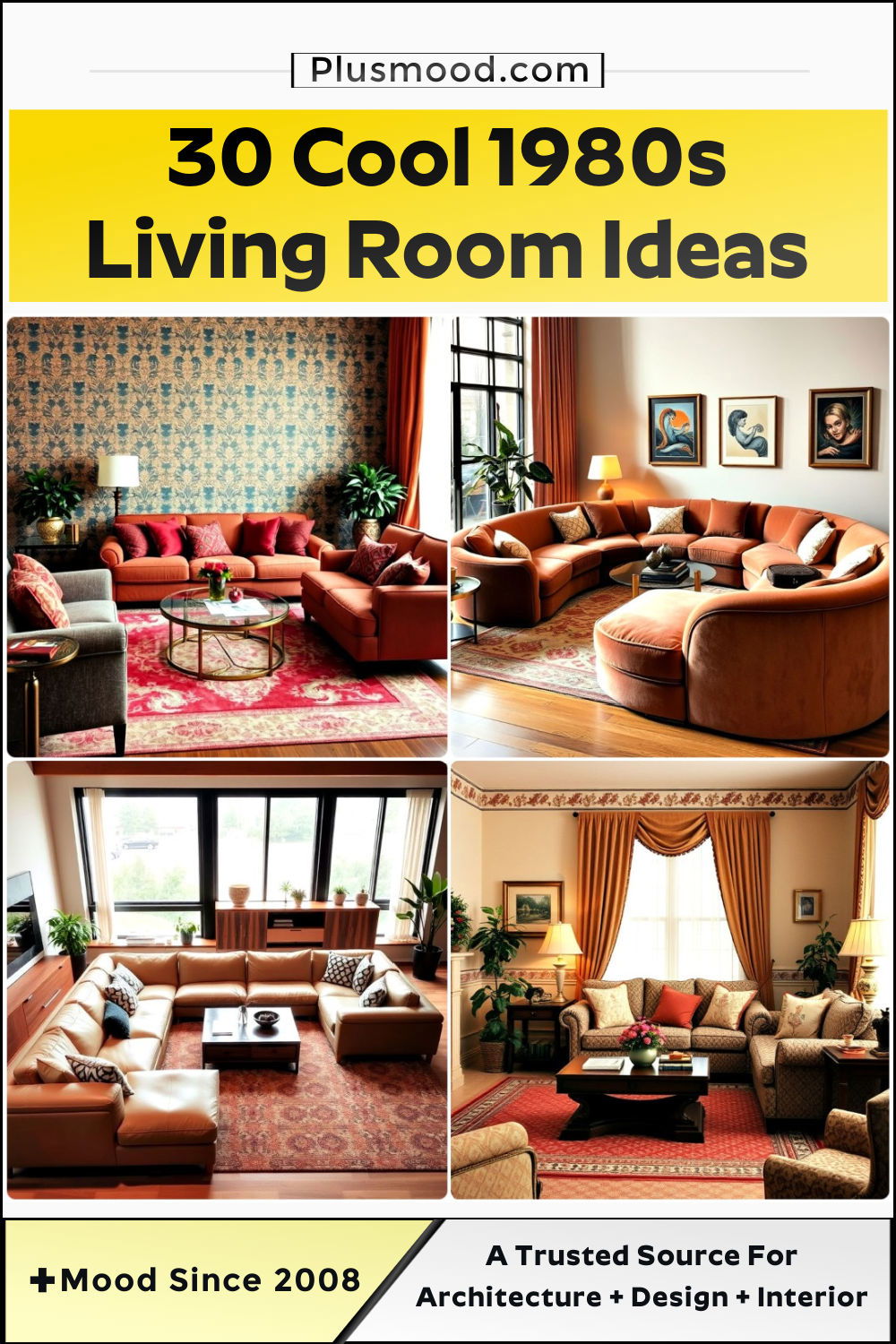
1. Bold Geometric Patterns
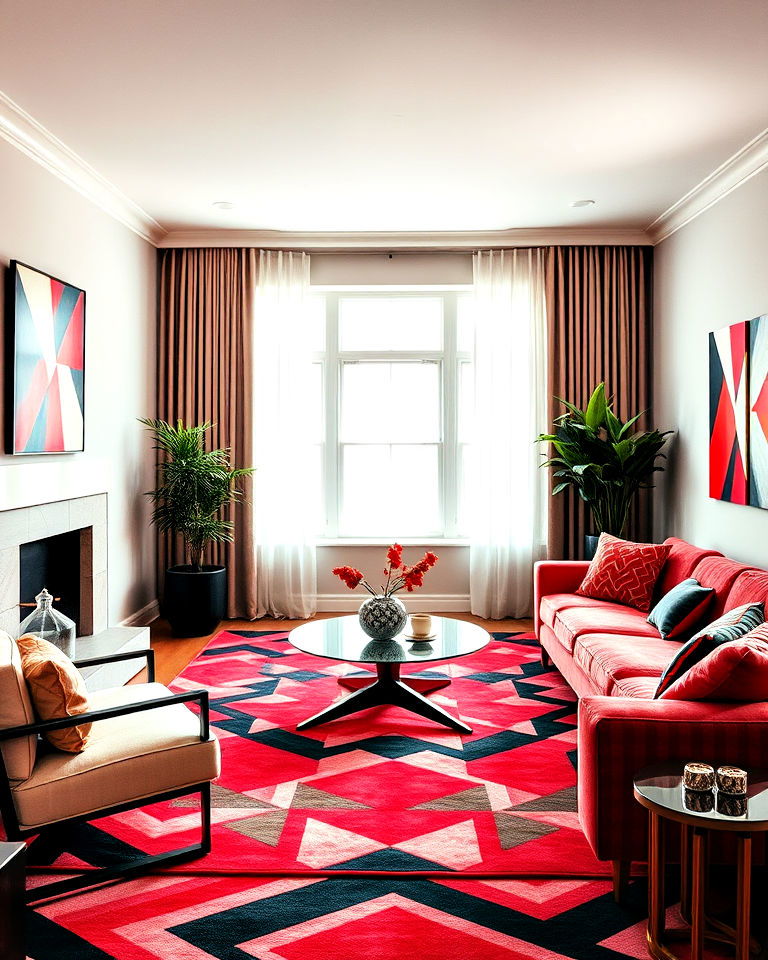
Throughout the 1980s, living rooms embraced bold geometric patterns. Whether on walls, furniture, or rugs, these vibrant designs brought energy and excitement to the space. They often used bright colors like red and black geometric designs, which instantly became focal points in any room. The patterns worked well in both minimalist and maximalist settings, making them versatile for different decor preferences. Incorporating these shapes into accent pieces or even larger furniture can give your living room a retro flair with modern appeal.
2. Shag Carpets
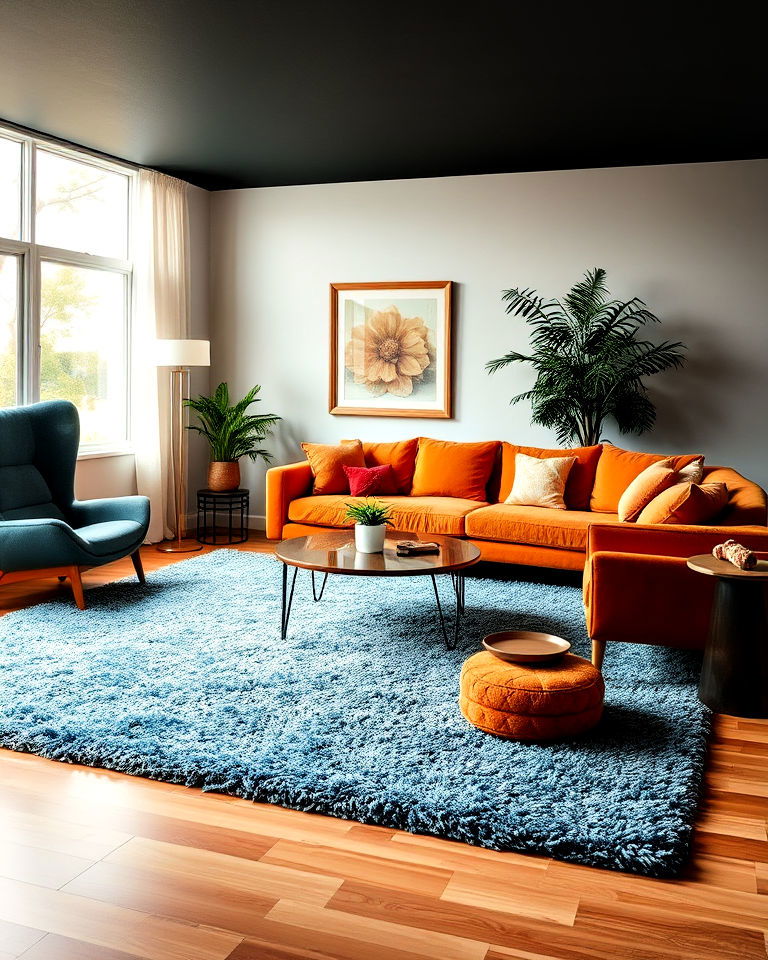
Shag carpets were a hallmark of 1980s living rooms, offering both comfort and style. Their plush texture made them an inviting addition, while their bold colors—like deep blues or burnt orange flooring—helped tie together a room's aesthetic. These carpets were often paired with modern furniture, creating a contrast between sleek lines and soft, inviting floors. If you're looking to recreate this cozy, nostalgic look, opting for a shag area rug can give your space that retro touch.
3. Glass Coffee Tables
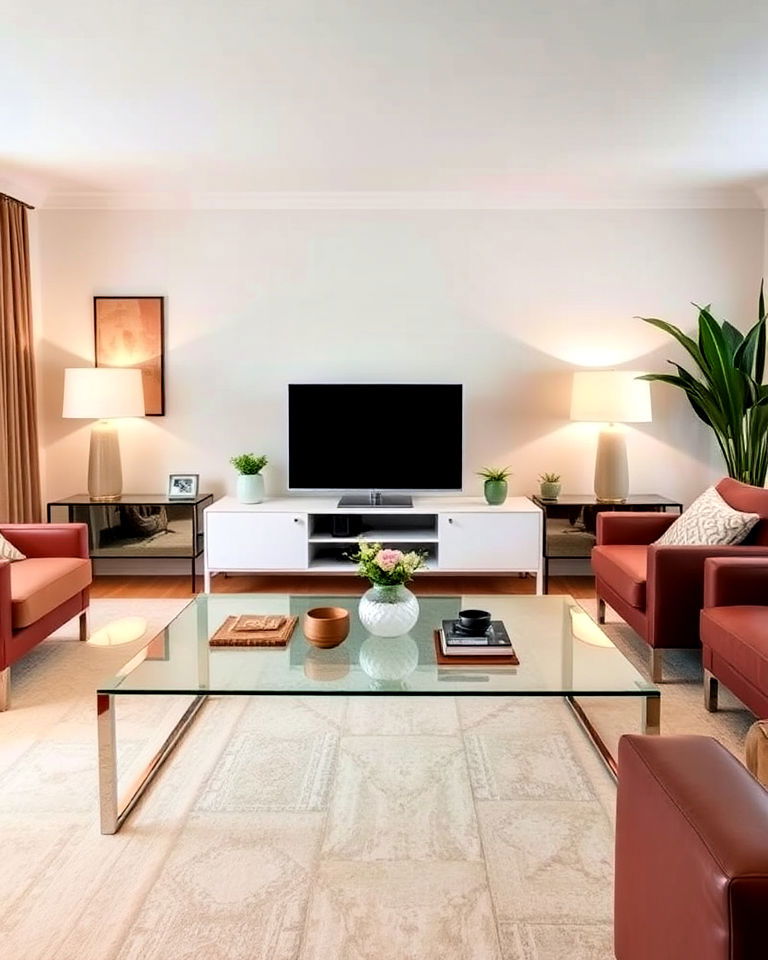
Design a nostalgic 80s living room with bold colors, geometric patterns, and iconic decor. Sleek and minimal, glass coffee table ideas were a staple of 1980s living room design. Their transparent surface added a sense of openness and light to a space, making them perfect for smaller rooms or those with lots of decorative elements. Often paired with chrome or brass legs, these tables brought a touch of glamour without being overpowering. A glass coffee table today offers the same timeless appeal and can blend well with both vintage and contemporary decor styles.
4. Pastel Color Schemes
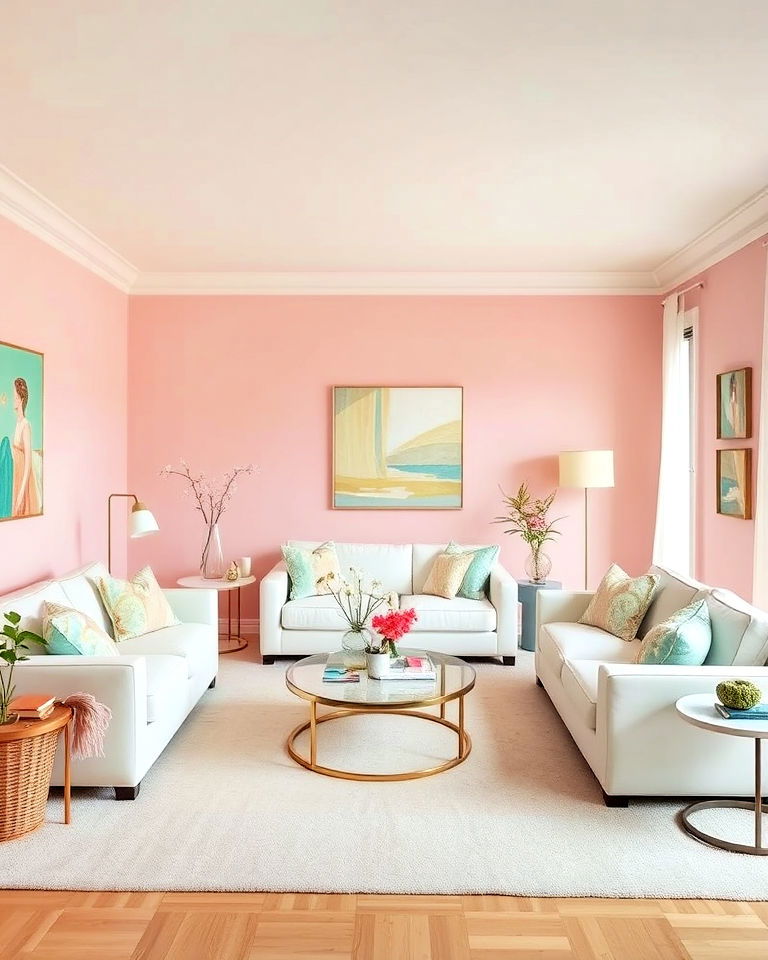
Pastel hues, such as soft pinks, mint greens, and light blues, were central to many pastel living room designs in the 1980s. These colors created a calm and inviting atmosphere, often paired with white furniture and decor to maintain a bright, airy feel. Pastel color schemes worked well with both minimalist and maximalist design approaches. Using pastel shades in accent pieces like pillows or wall art today can give your living room a soft, nostalgic nod to this iconic era.
5. Floral Prints
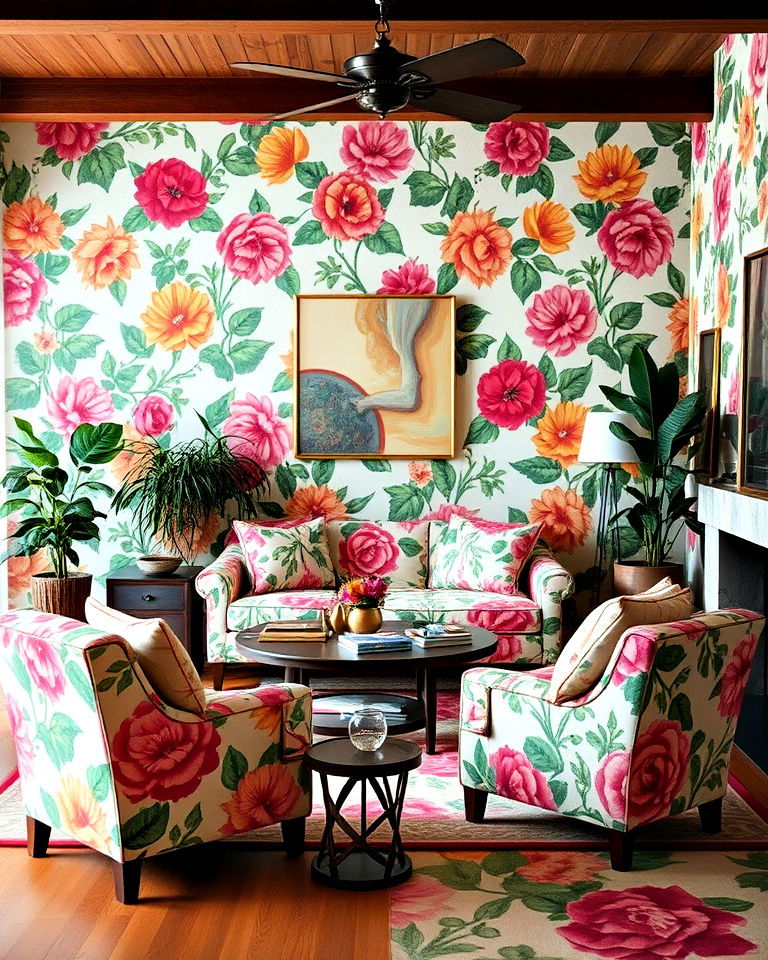
Floral prints were everywhere in the 1980s, from wallpaper to upholstery, inspiring modern floral-themed decor ideas. These bold, colorful patterns brought a sense of vibrancy and playfulness to living spaces. Often oversized and combined with complementary colors, floral prints were perfect for those wanting to make a strong style statement. Today, incorporating a floral accent chair or cushions can introduce a retro charm to a room without overwhelming the space.
6. Lacquered Furniture
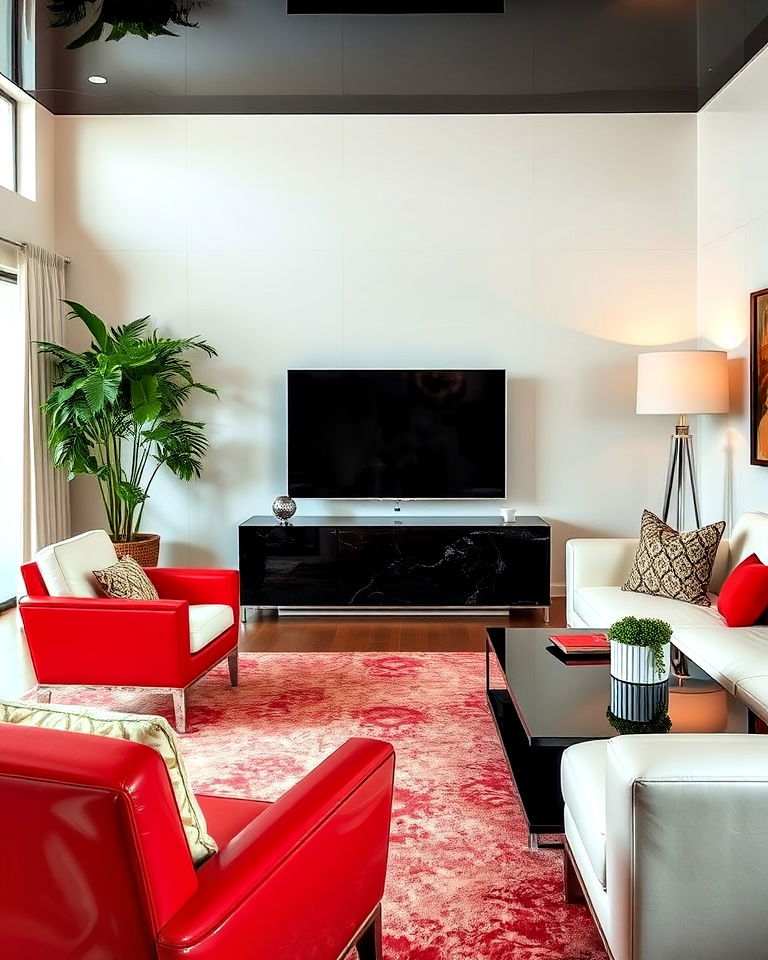
High-gloss lacquered furniture was synonymous with 1980s luxury living rooms. Typically found in bold colors like black, white, or red, these pieces added a polished, sophisticated touch to any space. The shiny surfaces reflected light and paired beautifully with other contemporary elements like chrome or glass. If you're looking to bring some of that 80s glamour into your home, a lacquered console table or sideboard might be the perfect accent.
7. Modular Sectional Sofas
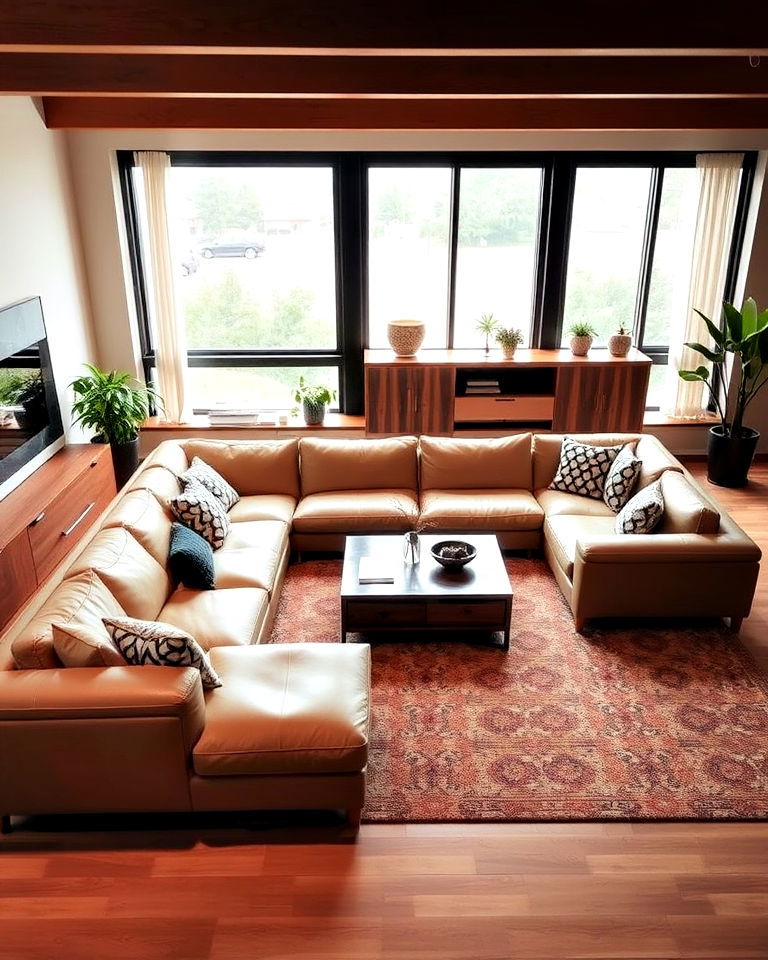
Transform your space into a classic 1980s living room with vintage furniture and eye-catching accents. Modular sectional sofas allowed for flexibility in seating arrangements, a key feature of 1980s modular living room layouts. Their clean lines and minimalist design made them ideal for large spaces, and their modular nature meant they could be rearranged to suit different needs. These sofas, often in neutral tones or leather finishes, made a bold, functional statement. Today, modular sectionals offer the same versatility and can anchor a modern living room while paying homage to retro style.
8. Neon Accents
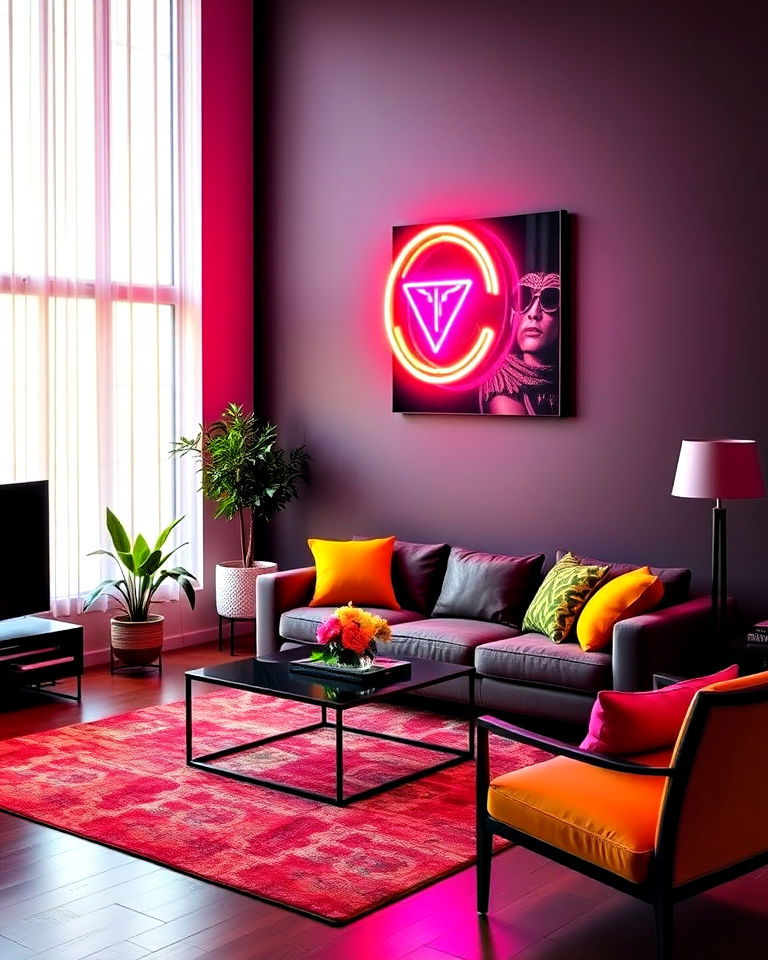
Nothing says the 1980s quite like neon accents. Whether through artwork, lighting, or even furniture, neon colors brought a fun, electrifying energy to living spaces. Paired with black or white backdrops, neon hues like bright pinks, greens, and yellows added contrast and life to the room. Today, a neon sign or vibrant throw pillow can give your living room an unexpected pop of color while nodding to 80s nostalgia.
9. Brass and Chrome Finishes
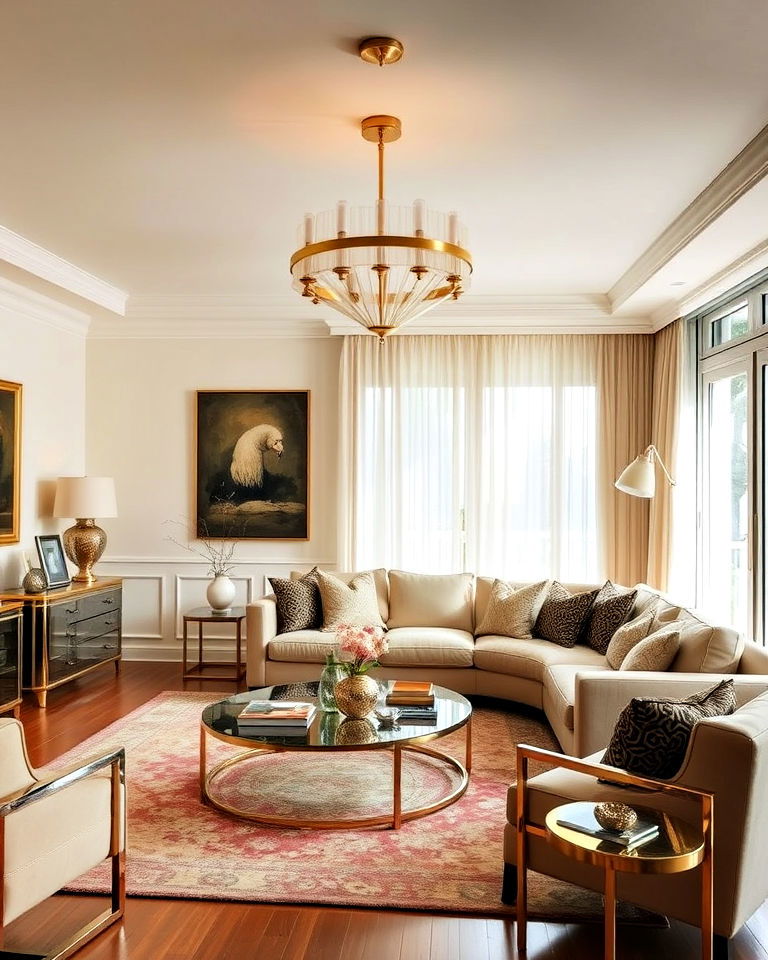
Shiny brass and chrome finishes were iconic materials used in 1980s living rooms. From coffee tables to lighting fixtures, these reflective metals added a sense of elegance and modernity. Chrome, in particular, was often used in furniture legs and frames, giving pieces a sleek, industrial look. Today, brass and chrome accents continue to add a sophisticated touch, whether through statement lighting or metallic accessories.
10. Oversized Wall Art
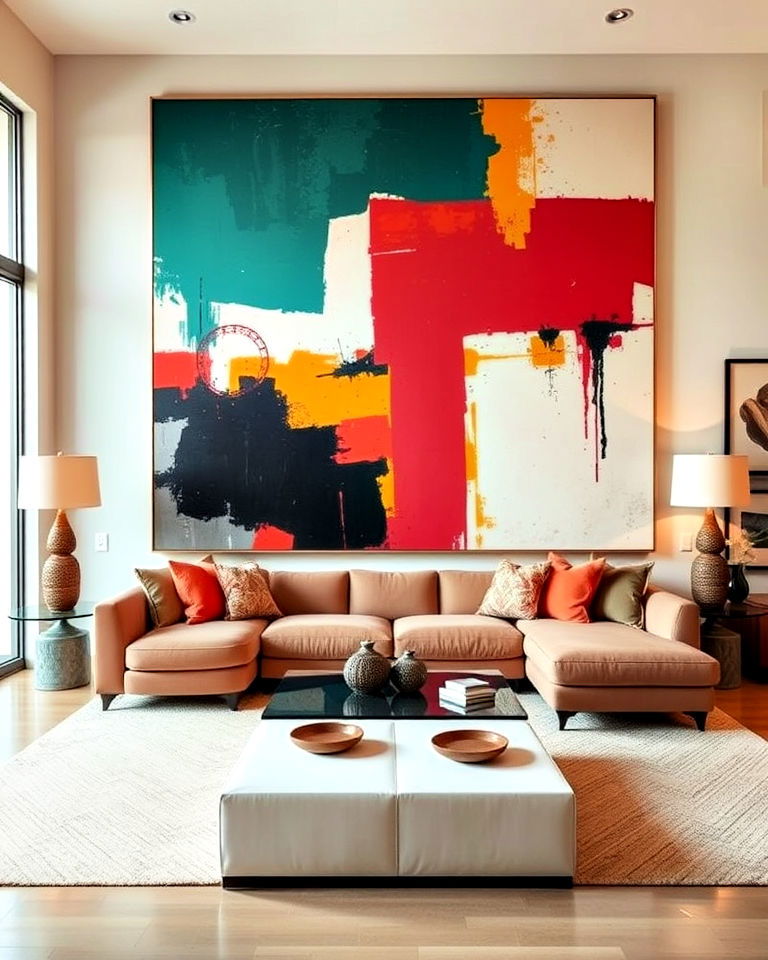
In the 1980s, oversized wall art often featured in living room wall decor, making a bold statement. These large pieces, often abstract or geometric, became the focal point of the room. Bright colors and dramatic designs were common, creating a vibrant atmosphere. Today, using oversized art can still create an impactful visual element, especially in minimalist spaces where it serves as the centerpiece of the room's design.
11. Black Lacquered Walls
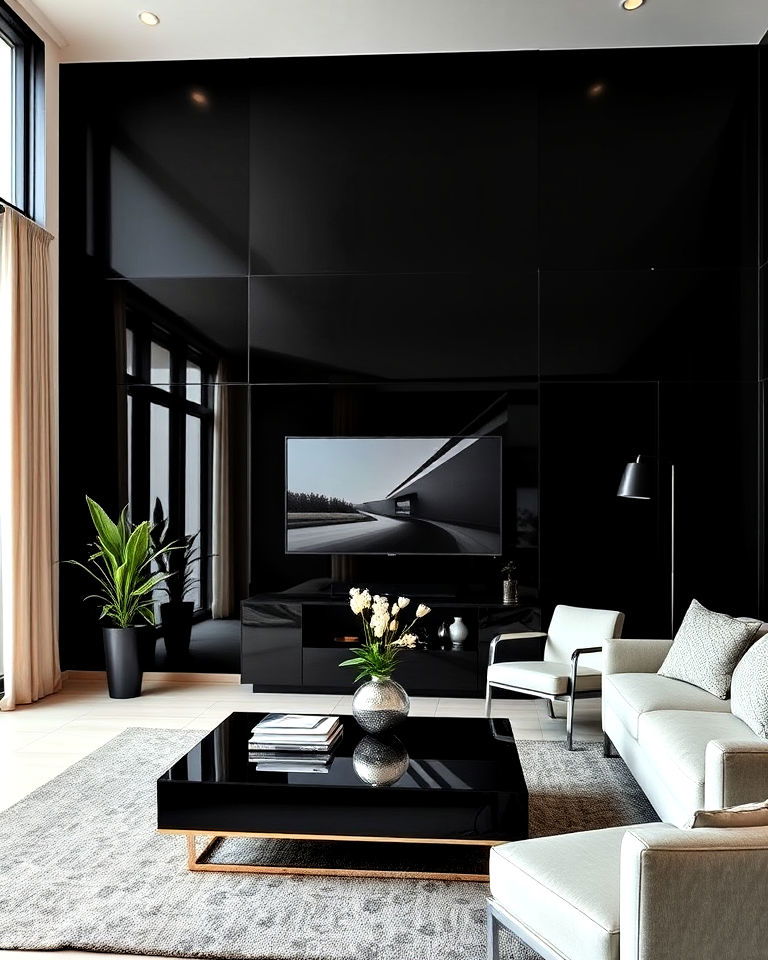
Black lacquered walls were a daring trend in the 1980s, creating a high-gloss, reflective surface that added depth and sophistication to a space. This bold choice was often paired with minimalist decor to avoid overwhelming the room. The shiny finish worked particularly well with chrome and glass accents, creating a futuristic, sleek look. While black lacquer may seem intense, using it on an accent wall today can create a striking, modern aesthetic.
12. Abstract Sculptures
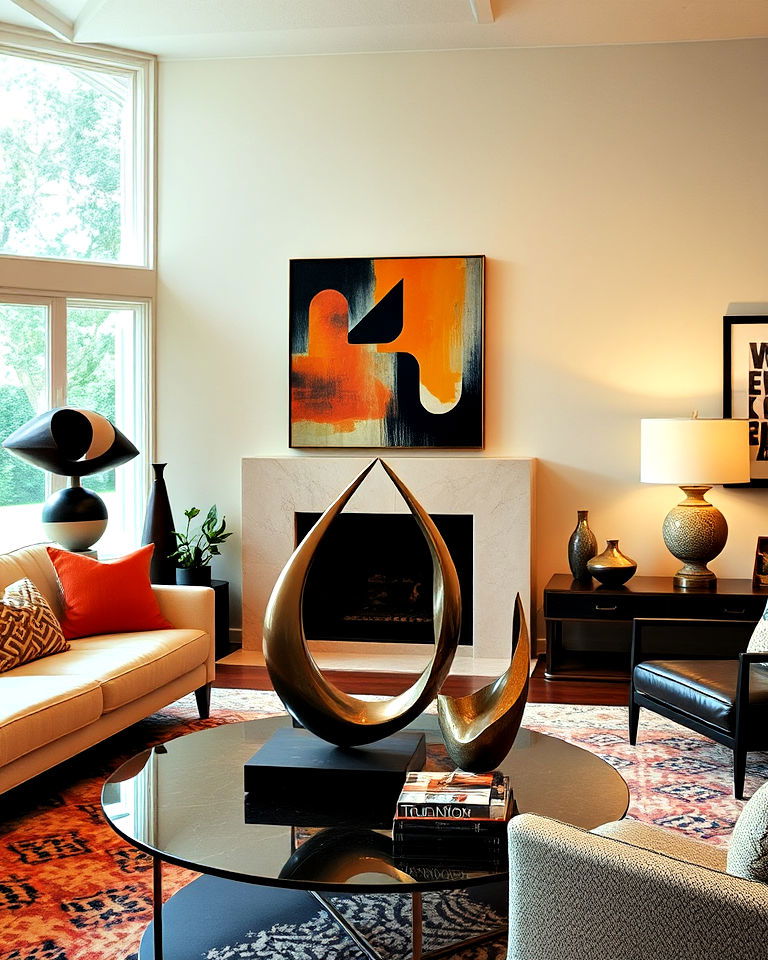
Abstract sculptures were popular decorative pieces in 1980s living rooms, adding a sense of modern art and sophistication to the space. Often placed on coffee tables or shelves, these sculptures came in geometric shapes or fluid, abstract forms, made from materials like metal or glass. Incorporating a bold sculpture today can instantly elevate a living room's style, serving as both an artistic focal point and a conversation piece.
13. Mirrored Furniture
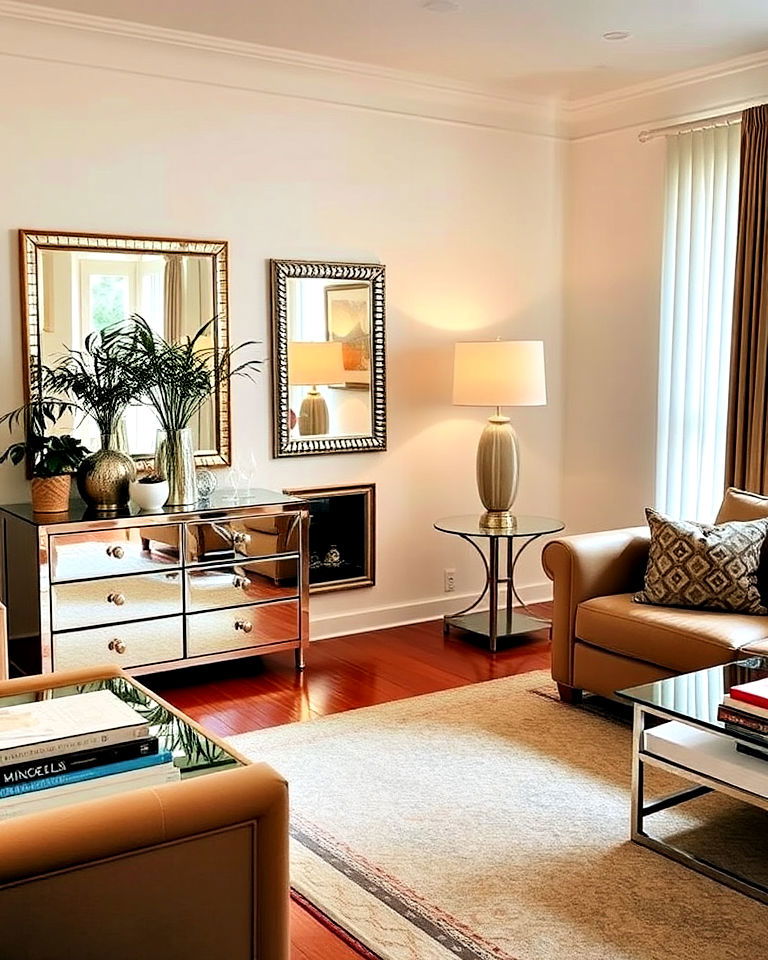
Create the perfect 80s house vibe with neon colors, retro furniture, and unique wall art. Mirrored furniture became a fashionable trend in 1980s living rooms, reflecting light and giving the space a brighter, more open feel. Pieces like mirrored side tables or dressers were both functional and glamorous, adding a touch of luxury. The mirrors' reflective quality also enhanced the room's color palette and design elements. Today, a mirrored accent piece can bring that same elegance and expand the visual space in your living room.
14. Leather Upholstery
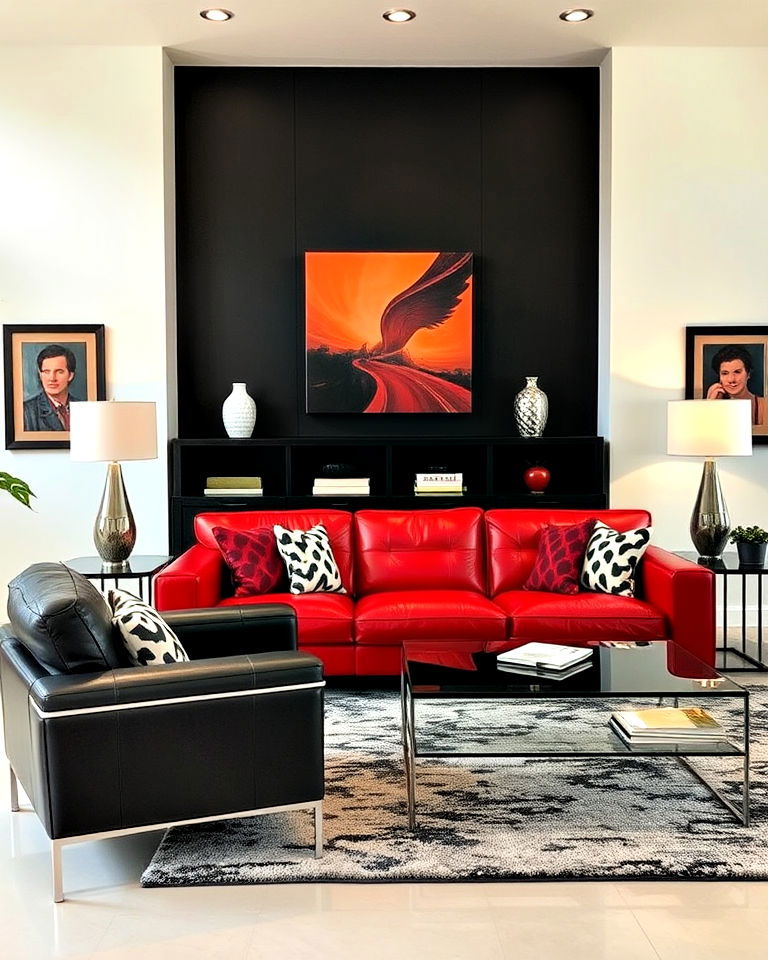
Leather upholstery, especially in bold colors like black and white designs, became synonymous with the sleek, modern aesthetic of the 1980s. Whether in the form of a plush sofa or an accent chair, leather added a sense of luxury and durability to the living room. Its glossy finish was often paired with metal accents, enhancing the room's contemporary feel. Today, leather remains a popular choice for its timeless appeal and easy maintenance.
15. Track Lighting
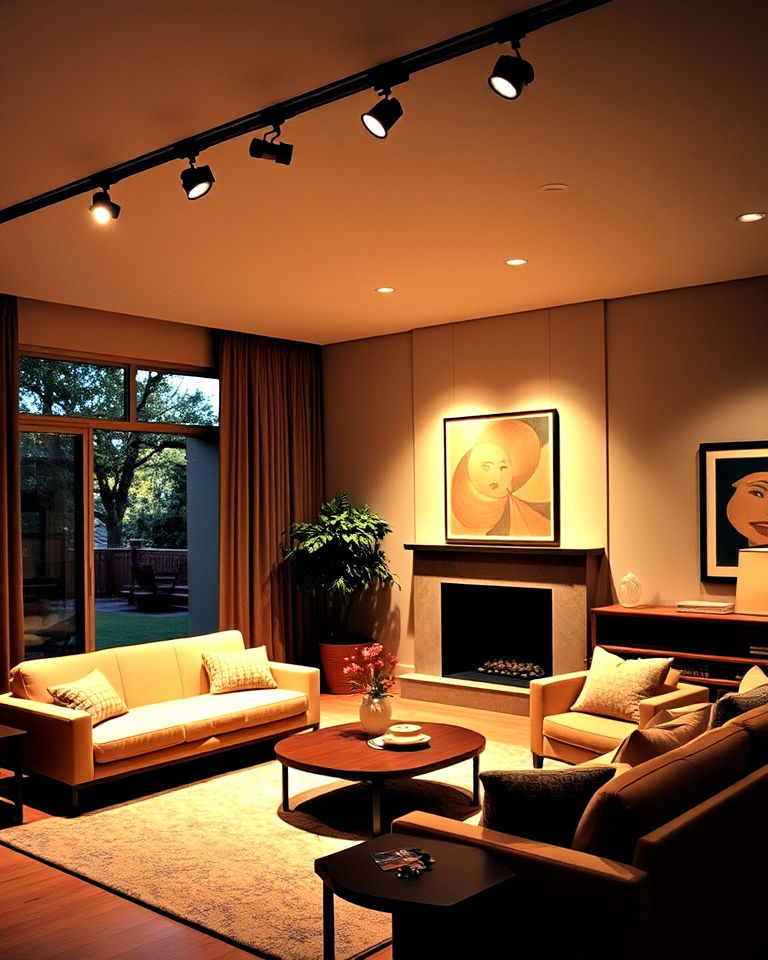
Track lighting was a practical yet stylish solution for illuminating 1980s living rooms. It allowed for adjustable lighting that could highlight specific areas of the room, such as artwork or seating areas. The minimalist design of track lighting fixtures made them ideal for modern living spaces. If you want to maintain a clean, contemporary look while ensuring flexibility in lighting, track lighting continues to be an excellent choice.
16. Patterned Wallpaper
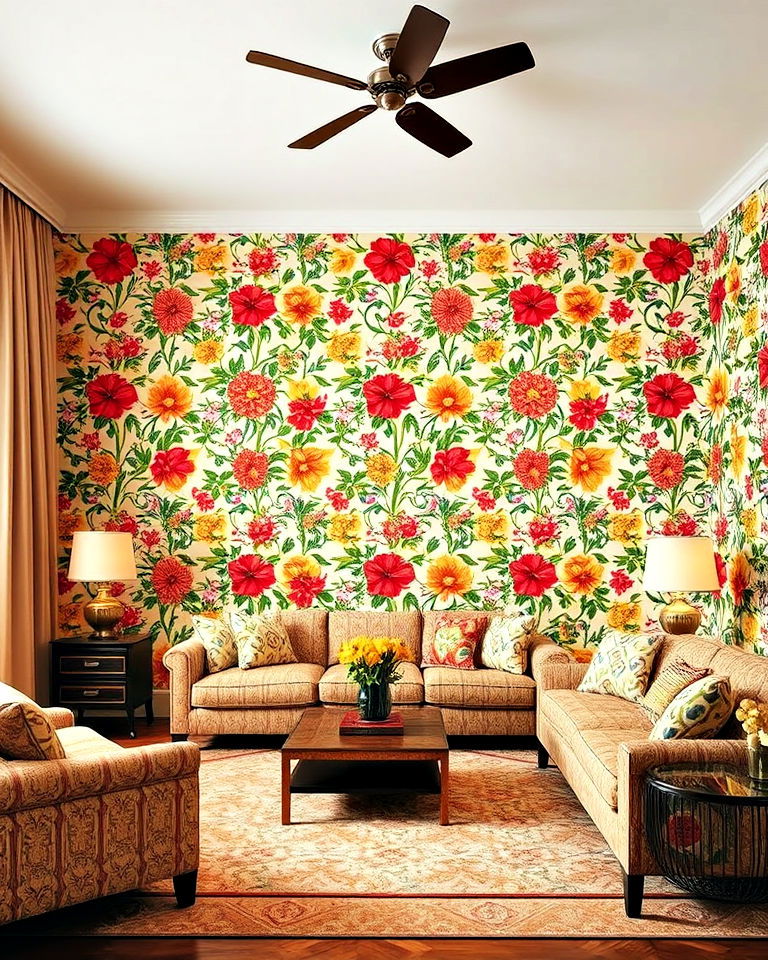
Patterned wallpaper was an essential part of 1980s decor, ranging from florals to geometric shapes. Bold, colorful patterns often covered entire walls, creating an immersive design experience. While wallpaper fell out of favor for a time, it has made a comeback, with updated designs that offer the same visual impact without overwhelming the space. Using patterned wallpaper on an accent wall today can bring a sense of retro flair to your living room.
17. Pop Art Influence
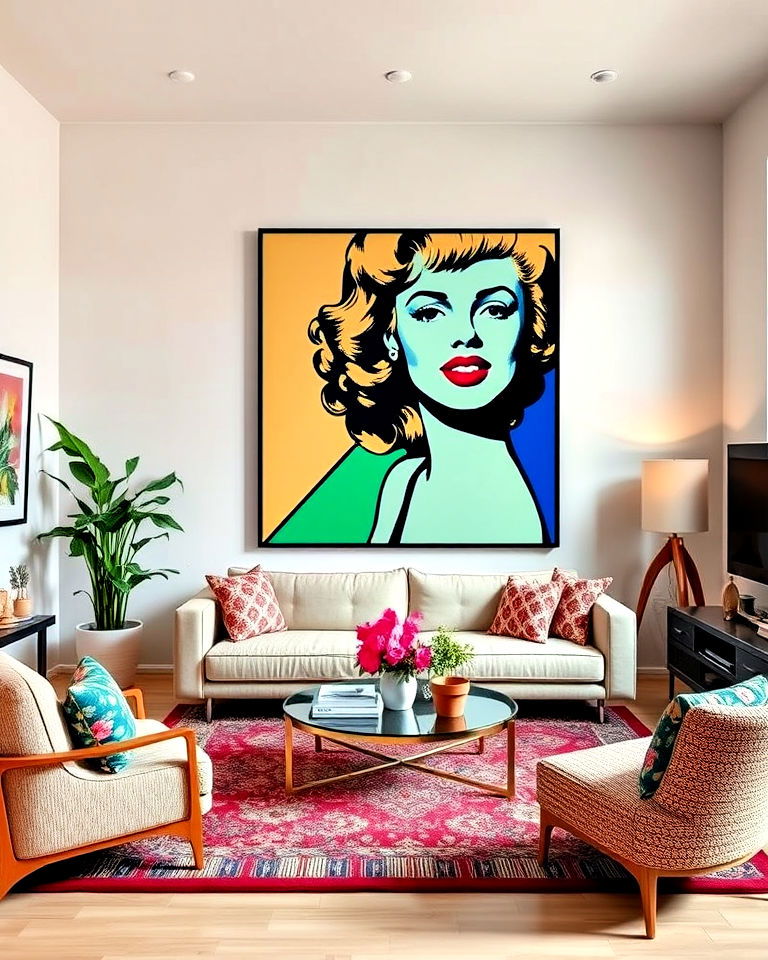
Pop art, inspired by the work of artists like Andy Warhol, had a significant influence on 1980s living room decor. Bright, graphic prints featuring iconic imagery or abstract patterns added a playful, artistic touch to the space. Large, framed prints or wall hangings were popular ways to incorporate this style. A pop art-inspired piece today can add a splash of color and fun to a modern living room, making a bold artistic statement.
18. Futuristic Furniture Designs
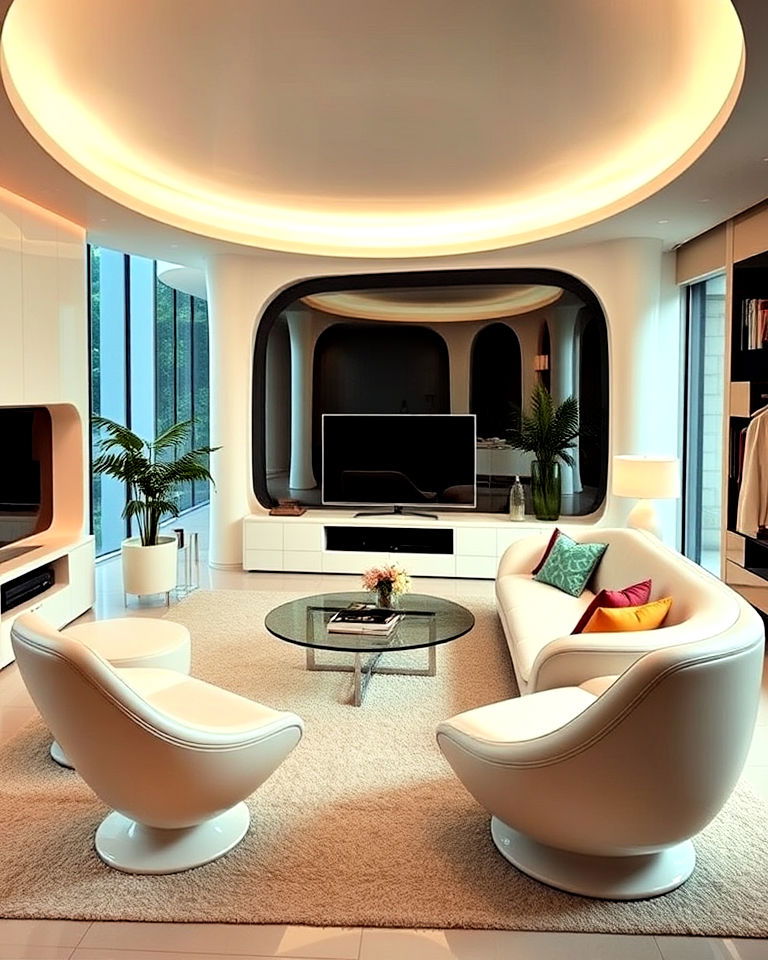
The 1980s saw a fascination with futuristic furniture designs that featured smooth curves, unusual shapes, and innovative materials. Chairs, sofas, and tables took on sculptural forms, often made from plastic, acrylic, or metal. These pieces gave living rooms a forward-thinking, modern edge. Today, incorporating one or two statement pieces with futuristic designs can instantly update your living room while paying homage to this bold trend.
19. Built-in Entertainment Centers
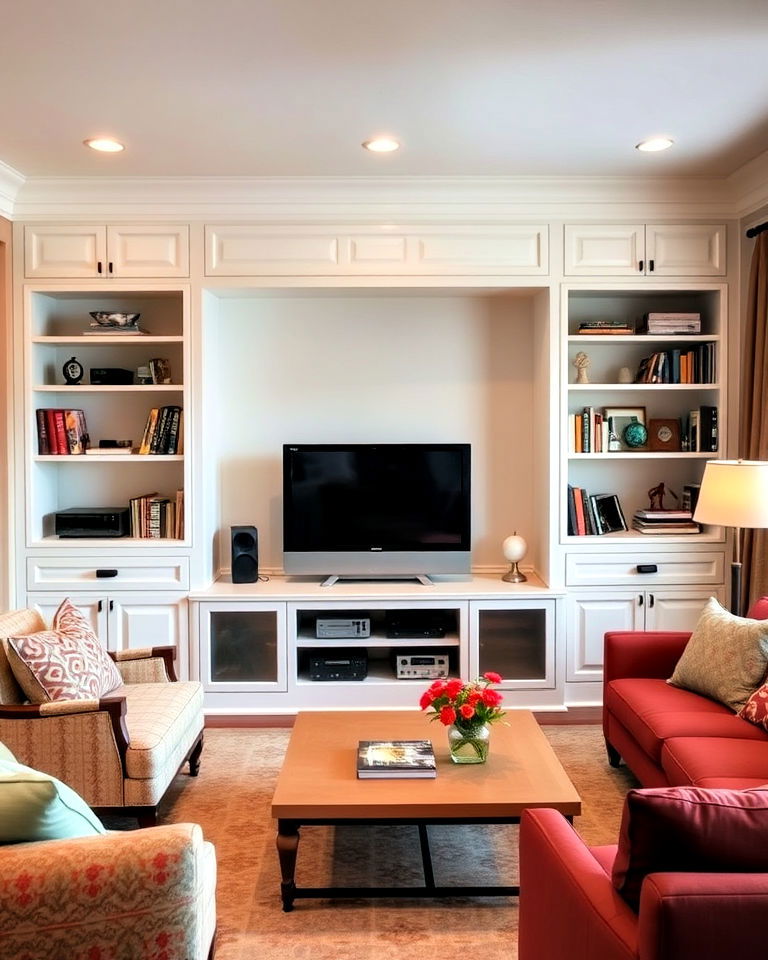
Bring back the past with a stylish retro 80s living room featuring timeless decor and bold design elements. Entertainment centers were a focal point in 1980s living rooms, often designed as built-in units that housed televisions, stereos, and even books. These multi-functional pieces provided both storage and a sleek, cohesive look. While technology has changed, the idea of a well-organized media center remains relevant. Opting for a custom-built entertainment center today can help streamline your living room while offering plenty of storage options.
20. Neon Lighting
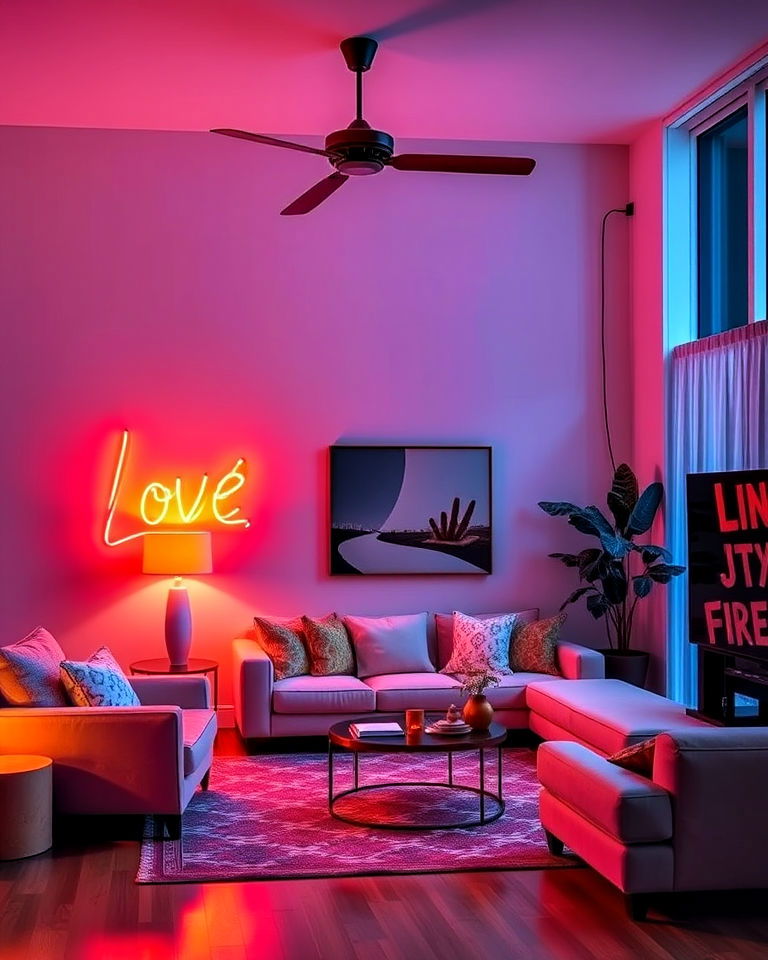
Neon lighting added an unmistakable 1980s touch to living rooms, with vibrant, glowing lights that created a dynamic atmosphere. Often shaped into words or abstract designs, neon signs became decorative focal points. While neon may seem bold, a well-placed neon accent today can add a fun, retro vibe without overwhelming the room. Consider a small neon sign or lamp for a playful, artistic twist.
21. Modular Shelving Units
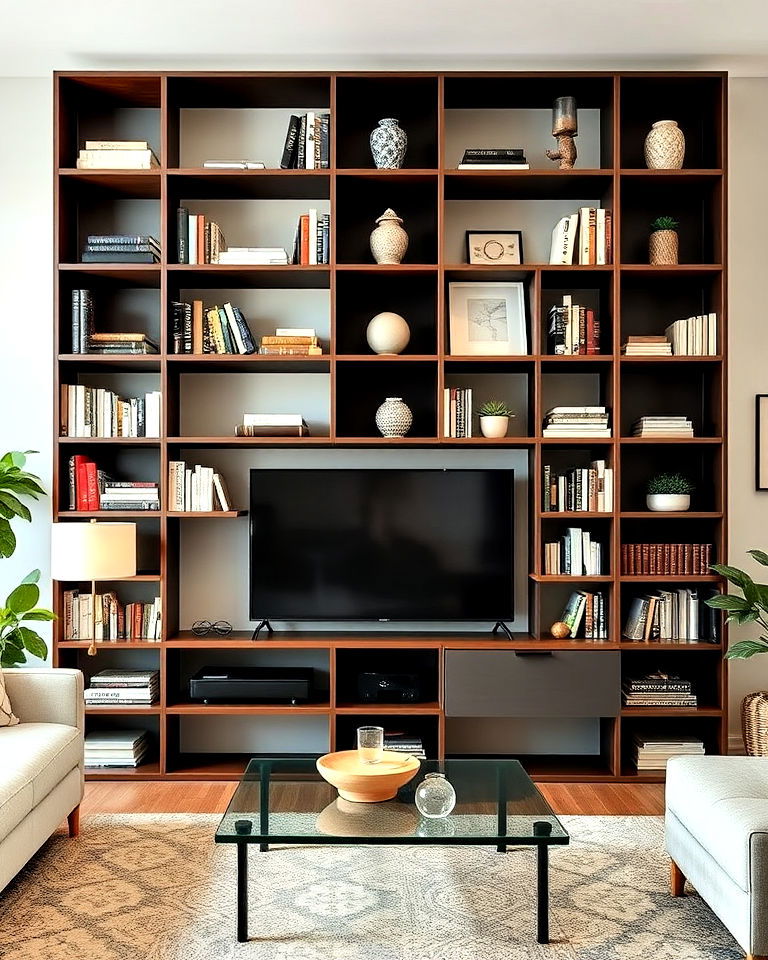
Modular shelving units were a practical and stylish solution in 1980s living rooms. These units allowed for customization in both layout and functionality, perfect for displaying books, art, or other decorative items. Their sleek, minimal design made them a staple in modern homes. Modular shelving continues to be a popular choice today, offering flexibility while keeping your living room organized and visually appealing.
22. Rattan Furniture
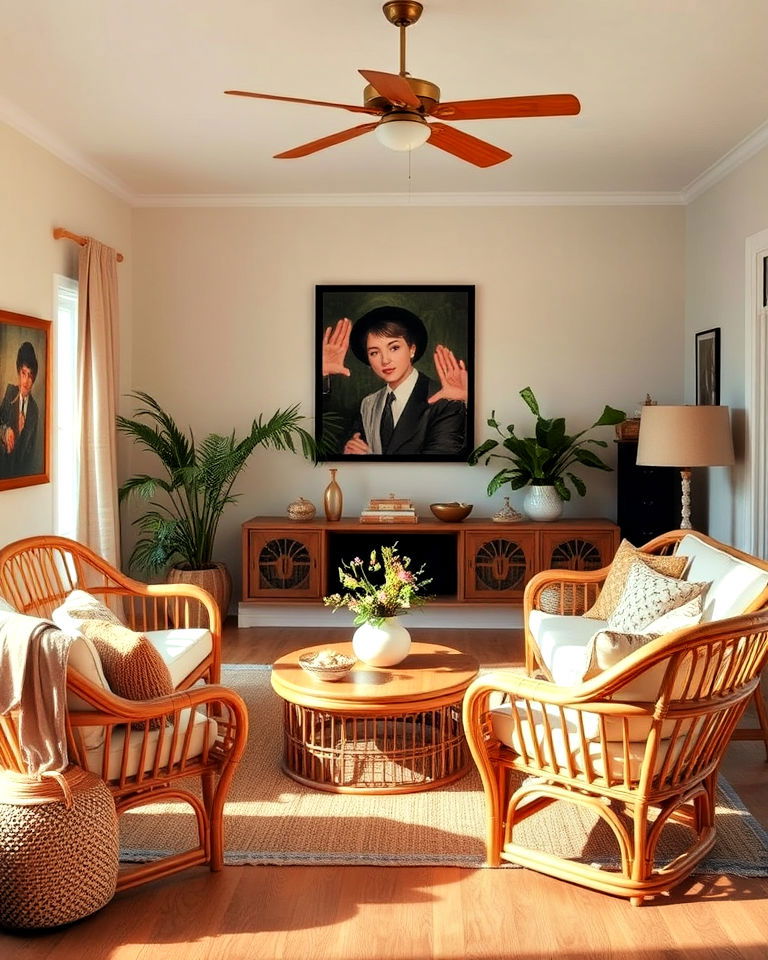
Rattan furniture brought a natural, earthy element into 1980s living rooms, balancing out the era's bold, synthetic trends. Lightweight yet durable, rattan pieces like chairs, coffee tables, and shelves added texture and warmth to the space. Often paired with plush cushions or throws, rattan created a cozy atmosphere. Incorporating rattan today can give your living room a laid-back, bohemian vibe while staying true to its 80s roots.
23. Floor Lamps with Sculptural Designs
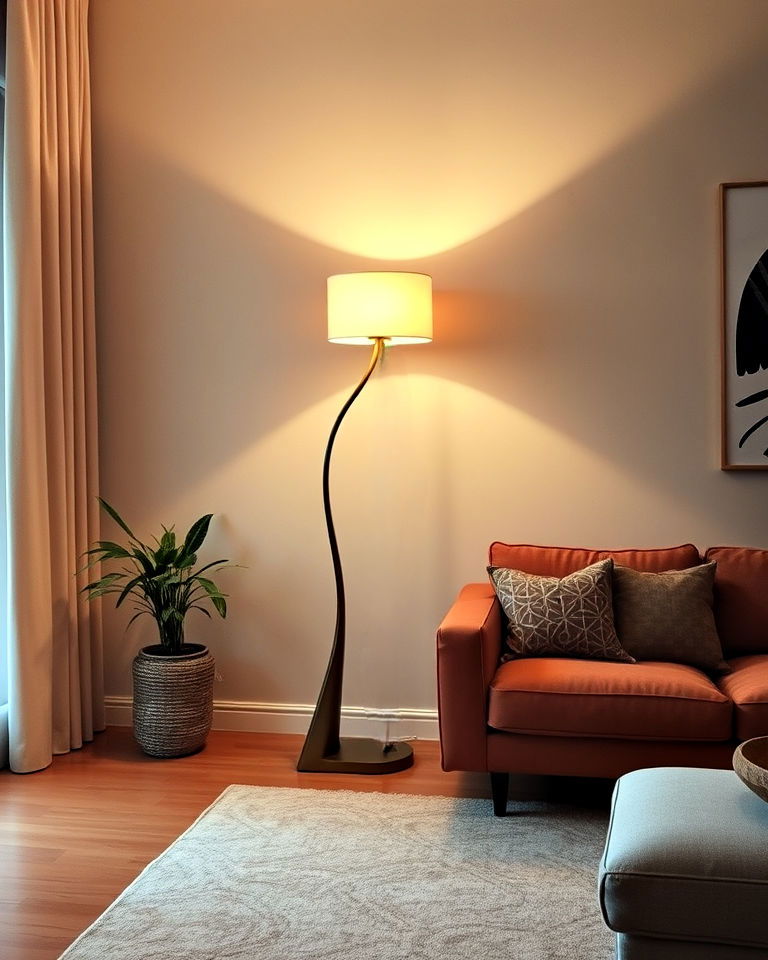
Sculptural floor lamps were a popular way to add both lighting and artistic flair to 1980s living rooms. These lamps often featured sleek, geometric shapes or curved lines, acting as statement pieces. A bold floor lamp can serve as both a functional light source and a piece of art. Today, floor lamps with unique designs remain a great way to introduce a retro yet modern touch to your living space.
24. Curved Sofas
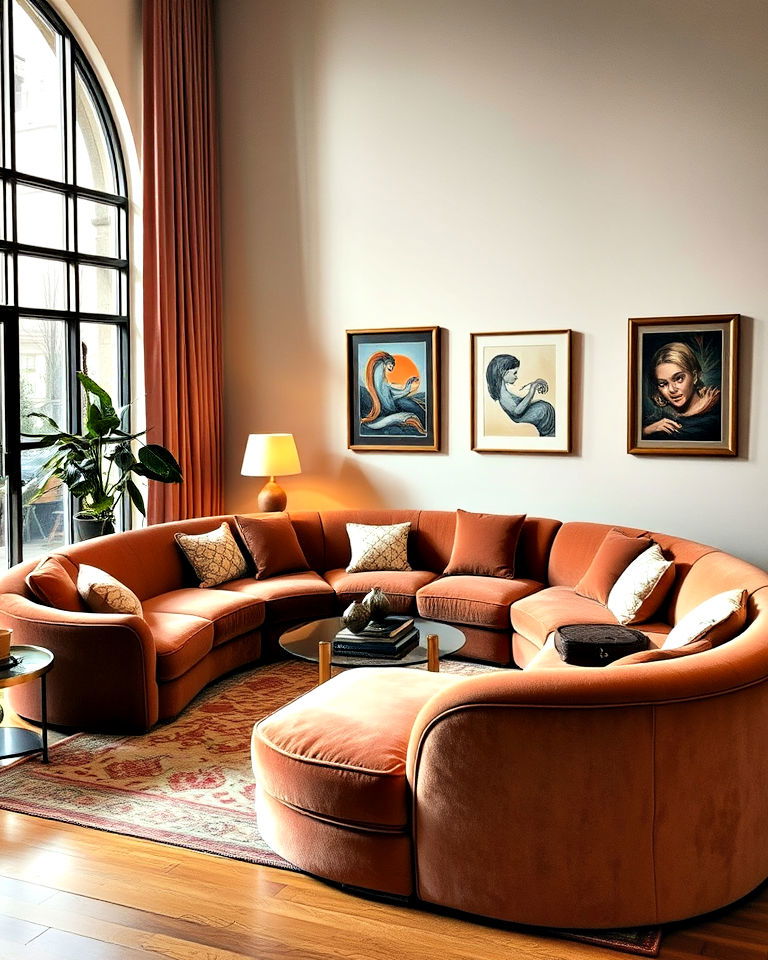
Curved sofas, with their fluid shapes and smooth lines, became a defining trend in 1980s living room design. These statement pieces added a soft, inviting feel to the space, while also creating a sense of movement. Often upholstered in velvet or leather, curved sofas made the room feel more dynamic. Today, a curved sofa can bring both comfort and a touch of retro glamour to your living room.
25. High-Gloss Floors
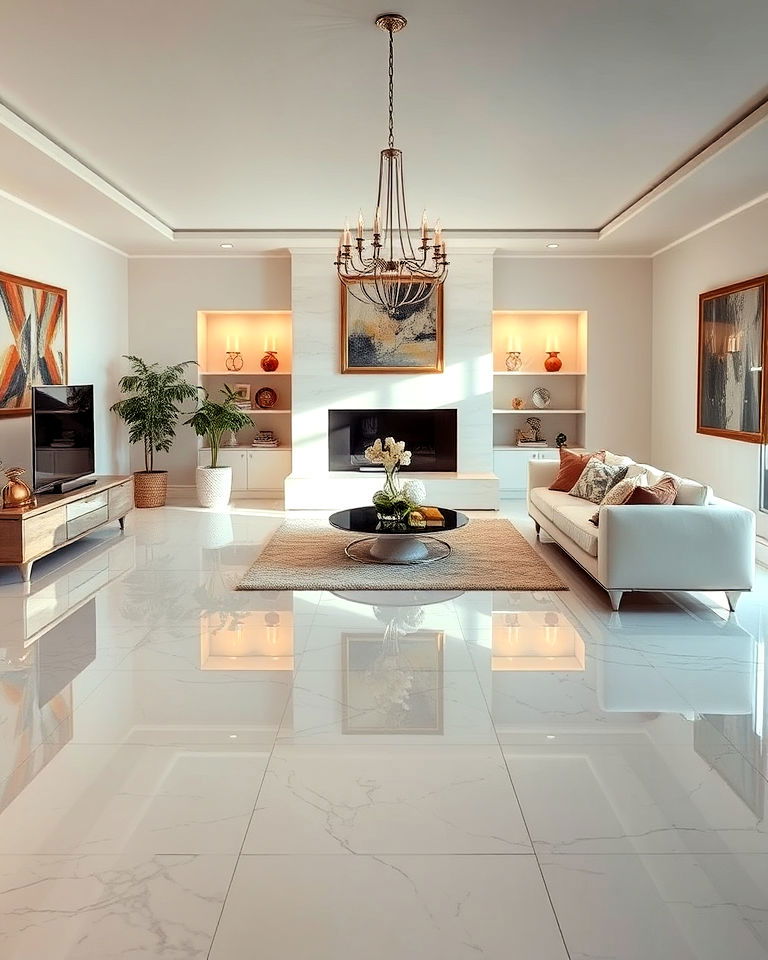
High-gloss floors, often in materials like polished marble or tile, were a hallmark of high-end living room flooring in the 1980s. These reflective surfaces added an element of luxury and made rooms feel more open and bright. While high-gloss flooring can be harder to maintain, it offers a sleek, modern look that can elevate your living space. Today, opting for a high-gloss finish on floors or even on certain furniture pieces can create a clean, contemporary aesthetic.
26. Flocked Wallpaper
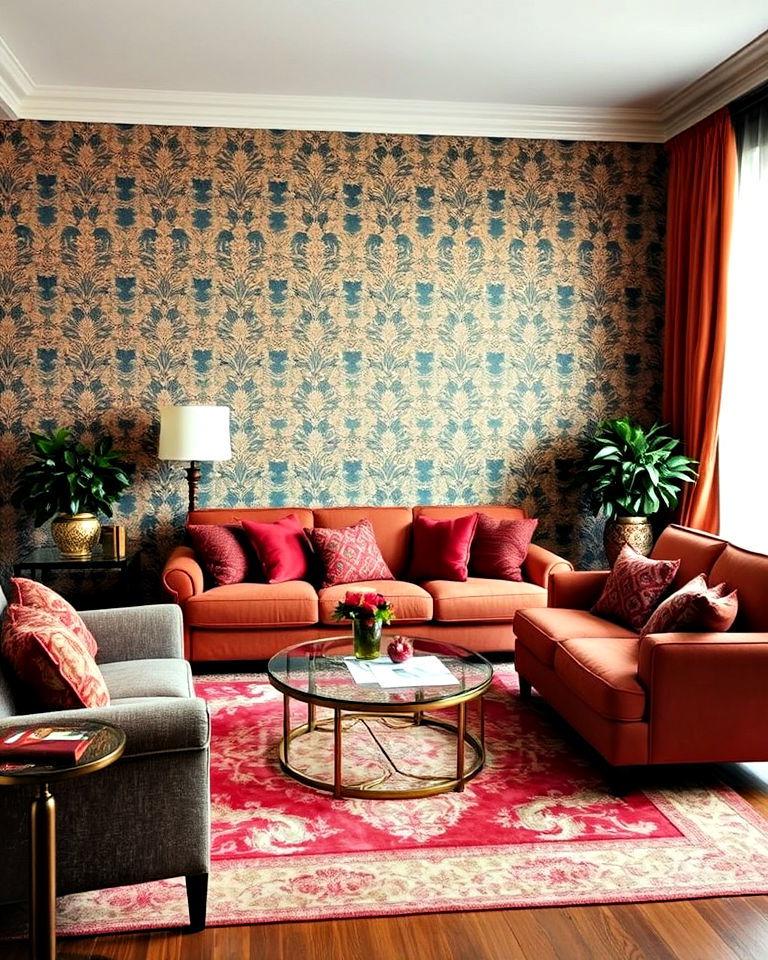
Flocked wallpaper, with its textured, velvet-like surface, was a dramatic and luxurious choice for 1980s living rooms. Often featuring bold, ornate patterns in rich colors, flocked wallpaper added depth and elegance to the space. While it may seem bold, using flocked wallpaper on an accent wall today can create a glamorous, tactile feature that draws attention without overwhelming the room.
27. Crystal Chandeliers
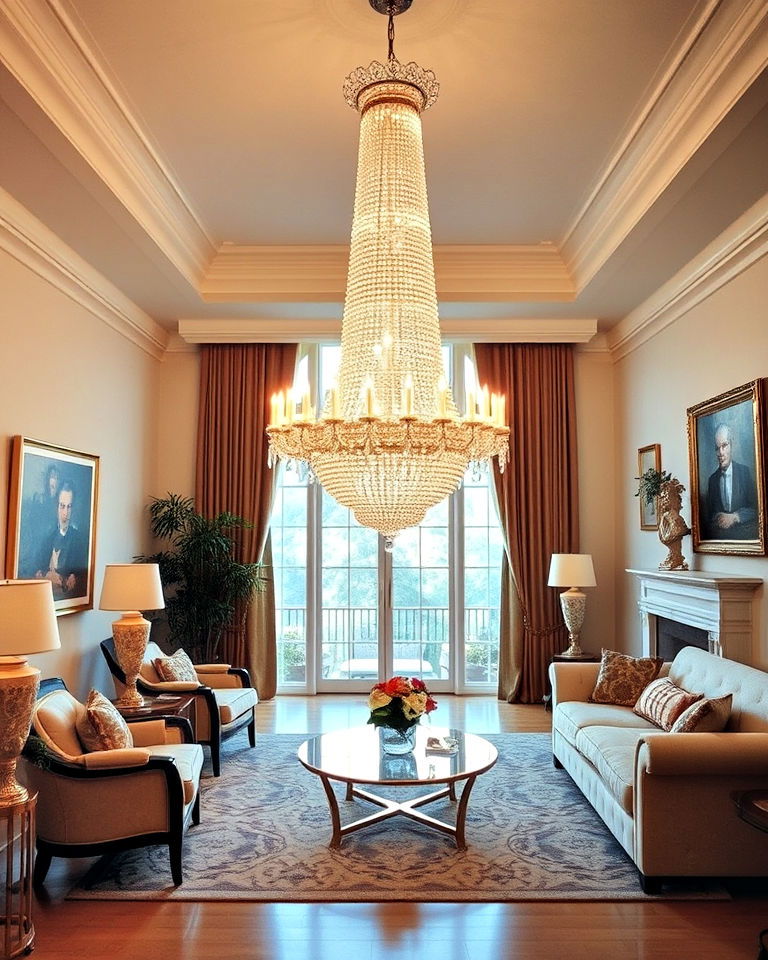
Crystal chandeliers added a touch of opulence to many 1980s living rooms and remain a key element in luxurious lighting ideas. These sparkling light fixtures created a sense of grandeur, often paired with modern or minimalist decor for contrast. A crystal chandelier today can add elegance and drama to a living room, whether you opt for a vintage piece or a modern interpretation. It's a timeless way to introduce a bit of 1980s glamour into your space.
28. Sunken Living Rooms
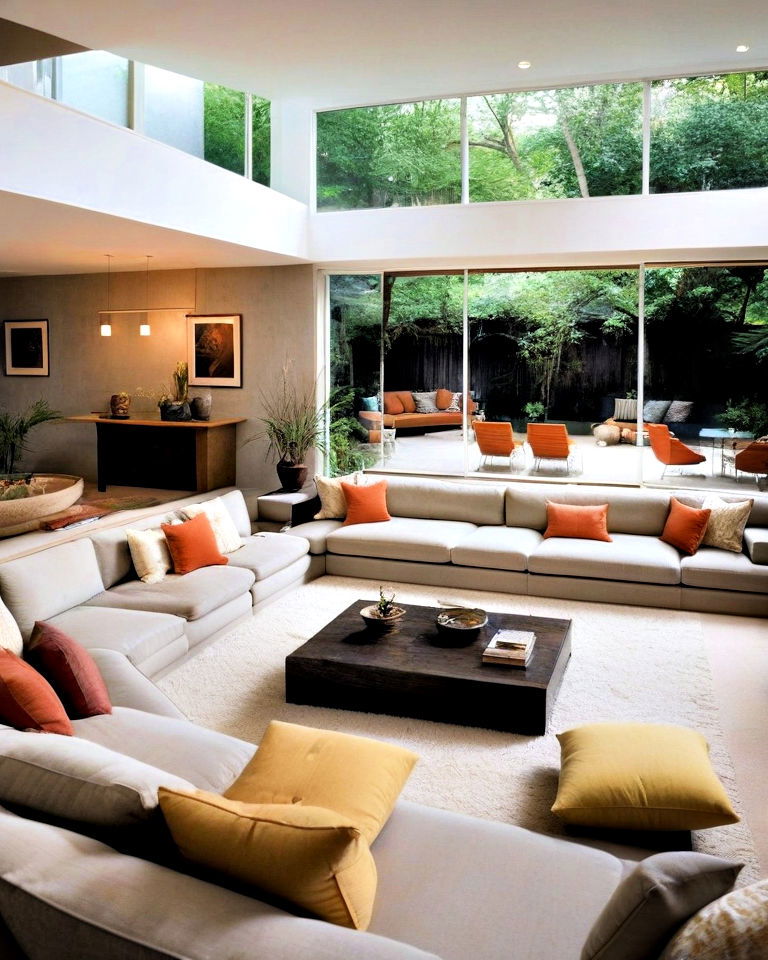
Sunken living rooms, often called conversation pits, were a distinctive architectural feature, inspiring modern sunken living room designs. These lower-level spaces created a cozy, intimate area for seating, often surrounded by built-in couches. While sunken living rooms have become less common, they offer a unique way to separate different zones in an open-plan space. Creating a sunken seating area today can add a retro yet functional design element to your home.
29. Glass Block Walls
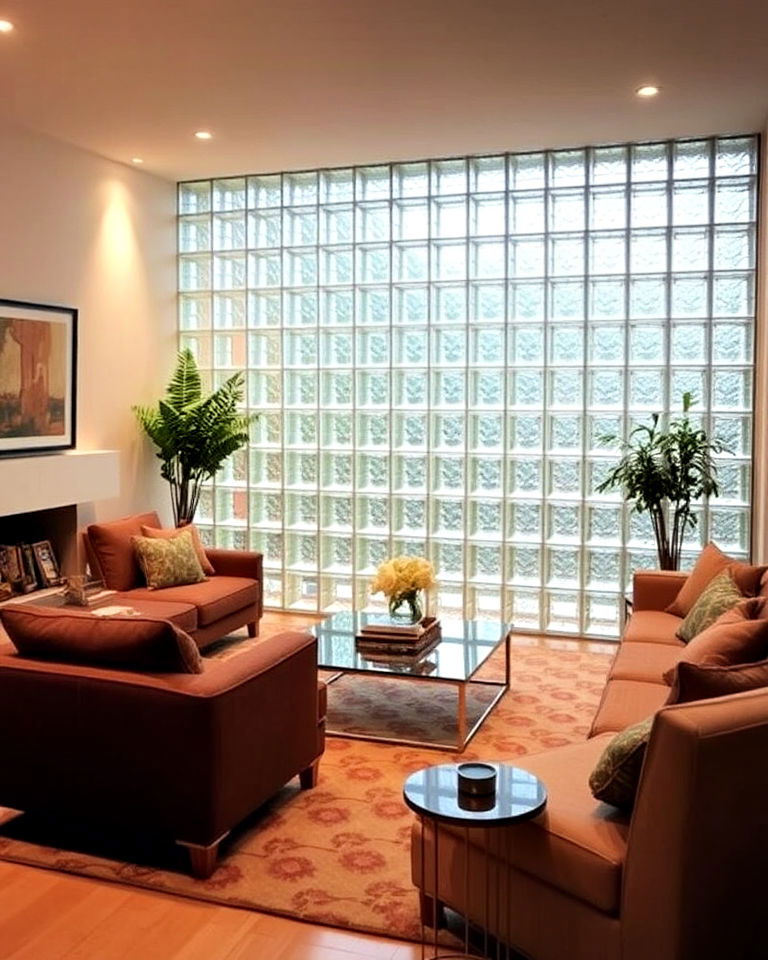
Glass block walls were a popular feature in 1980s living rooms, offering a way to divide spaces while still allowing light to pass through. The blocks provided a sense of privacy without making the room feel closed off. Today, using glass blocks in a modern living room can create a stylish partition or decorative feature, blending the retro with the contemporary.
30. Wallpaper Borders
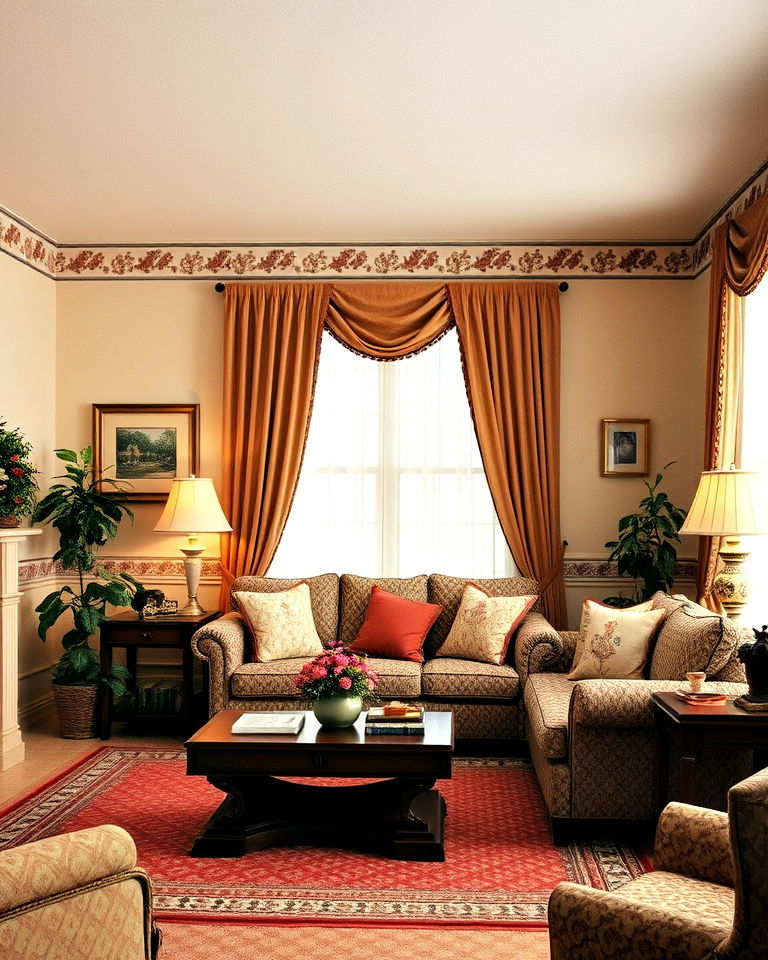
Wallpaper borders were a simple yet popular way to add decorative detail to 1980s living rooms. Often used near the ceiling or along the chair rail, these borders featured patterns like florals or geometric designs. While they fell out of favor for a while, wallpaper borders can be used today in more subtle ways, adding a touch of retro charm without overpowering the space.
Conclusion:
The 1980s living room style was all about pushing boundaries, mixing contrasting elements, and creating a space that was both comfortable and visually striking. By reintroducing elements like modular sectionals, glass coffee tables, or brass finishes, you can infuse your home with a touch of retro flair that feels both nostalgic and contemporary. Whether it's a bold geometric rug or a pop art-inspired print, these timeless 1980s living room ideas offer endless opportunities to experiment and personalize your space. Dive in and let your living room channel the playful spirit of this unforgettable design era.
Key Points:
- Bold Geometric Patterns: Geometric designs, often in bright colors, were a staple of 1980s living rooms, adding energy and modern flair.
- Shag Carpets: Plush, bold-colored carpets brought comfort and texture to the room.
- Glass and Lacquered Furniture: Sleek glass tables and high-gloss lacquered pieces contributed to a modern, polished look.
- Pastel and Neon Accents: Pastel color schemes created calm atmospheres, while neon brought fun and vibrancy.
- Modular and Curved Sofas: Flexible seating arrangements and unique curved designs defined comfort and style.
- Brass and Chrome Finishes: Reflective metals added elegance and shine to living spaces.
- Pop Art and Sculptural Decor: Art-inspired pieces, from abstract sculptures to pop art prints, added personality.
- Mirrored Furniture: Mirrors enhanced light and space, adding a touch of luxury.
- Sunken Living Rooms: A retro architectural feature that provided cozy, intimate seating areas.
- Futuristic and Minimalist Designs: Curved lines, glossy finishes, and minimalist elements gave a forward-thinking look.
What to Do Next:
- Assess Your Space: Identify areas where you can introduce or blend retro elements like modular seating or geometric patterns.
- Choose Accent Pieces: Incorporate one or two 1980s-inspired pieces, like a glass coffee table or neon lighting, for a modern twist.
- Experiment with Color: Try adding pastel or bold neon accents to enliven your living room.
- Play with Materials: Use brass, chrome, or mirrored finishes to bring sophistication and light into the room.
- Go Bold with Art: Select abstract or pop art pieces to make a statement and personalize the space.

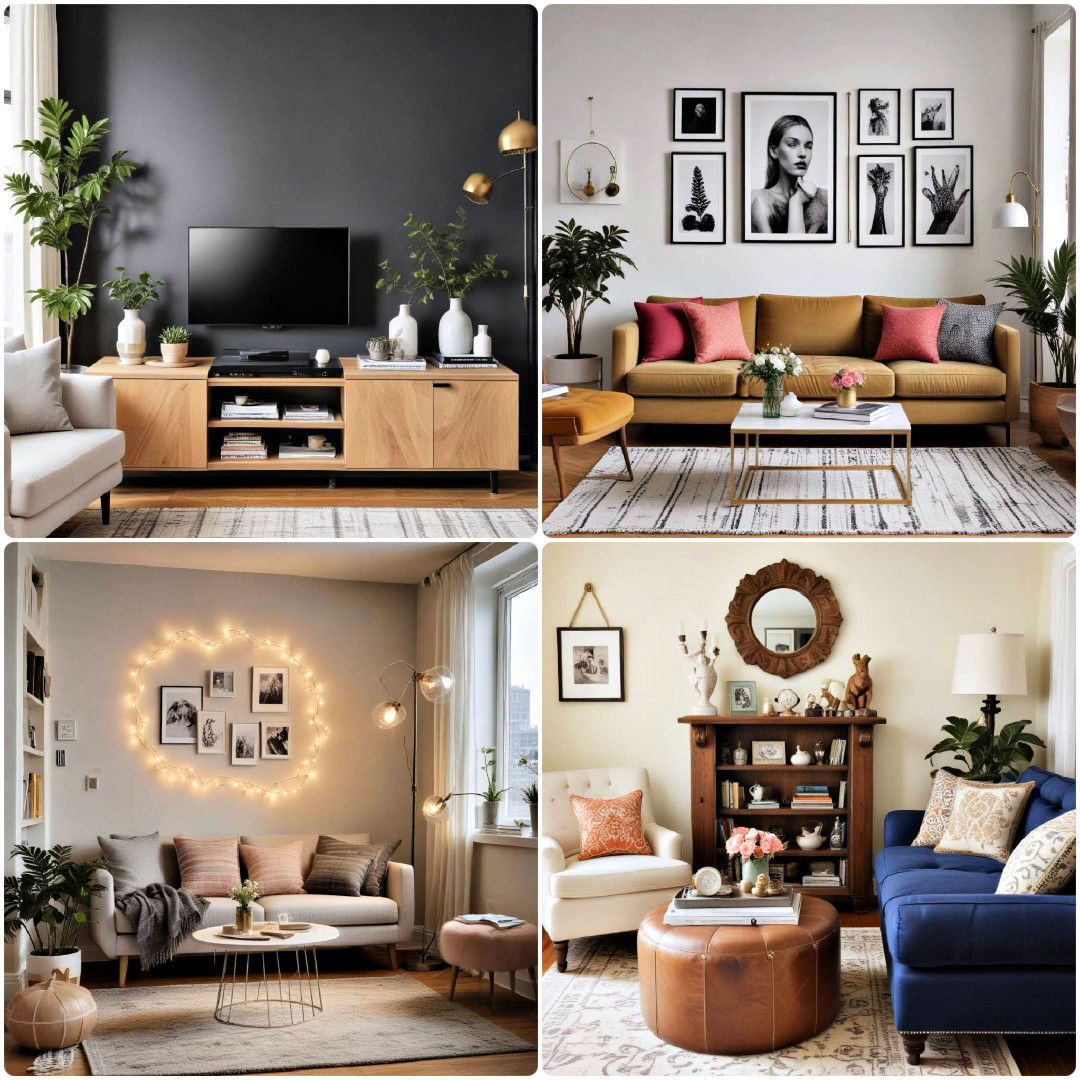
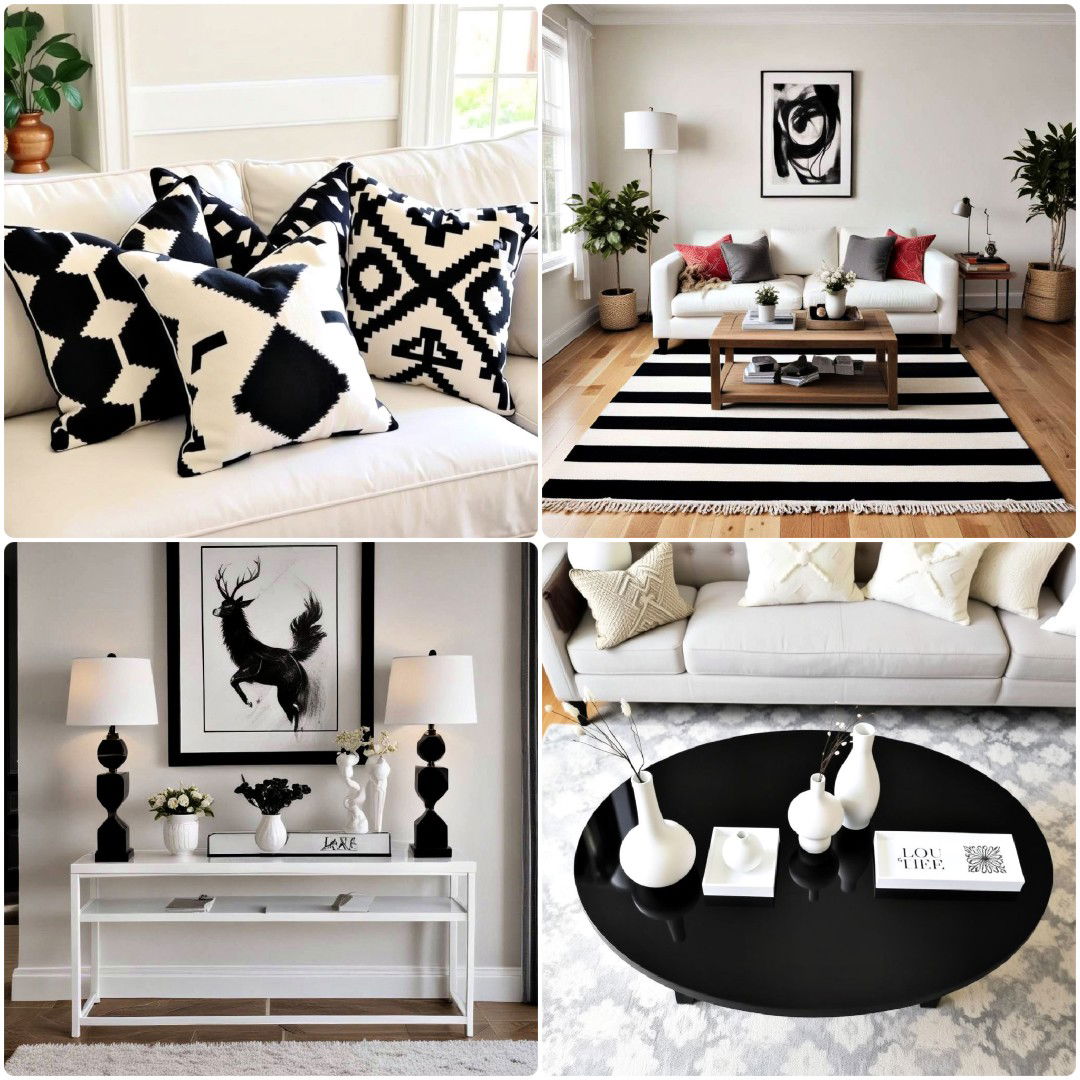
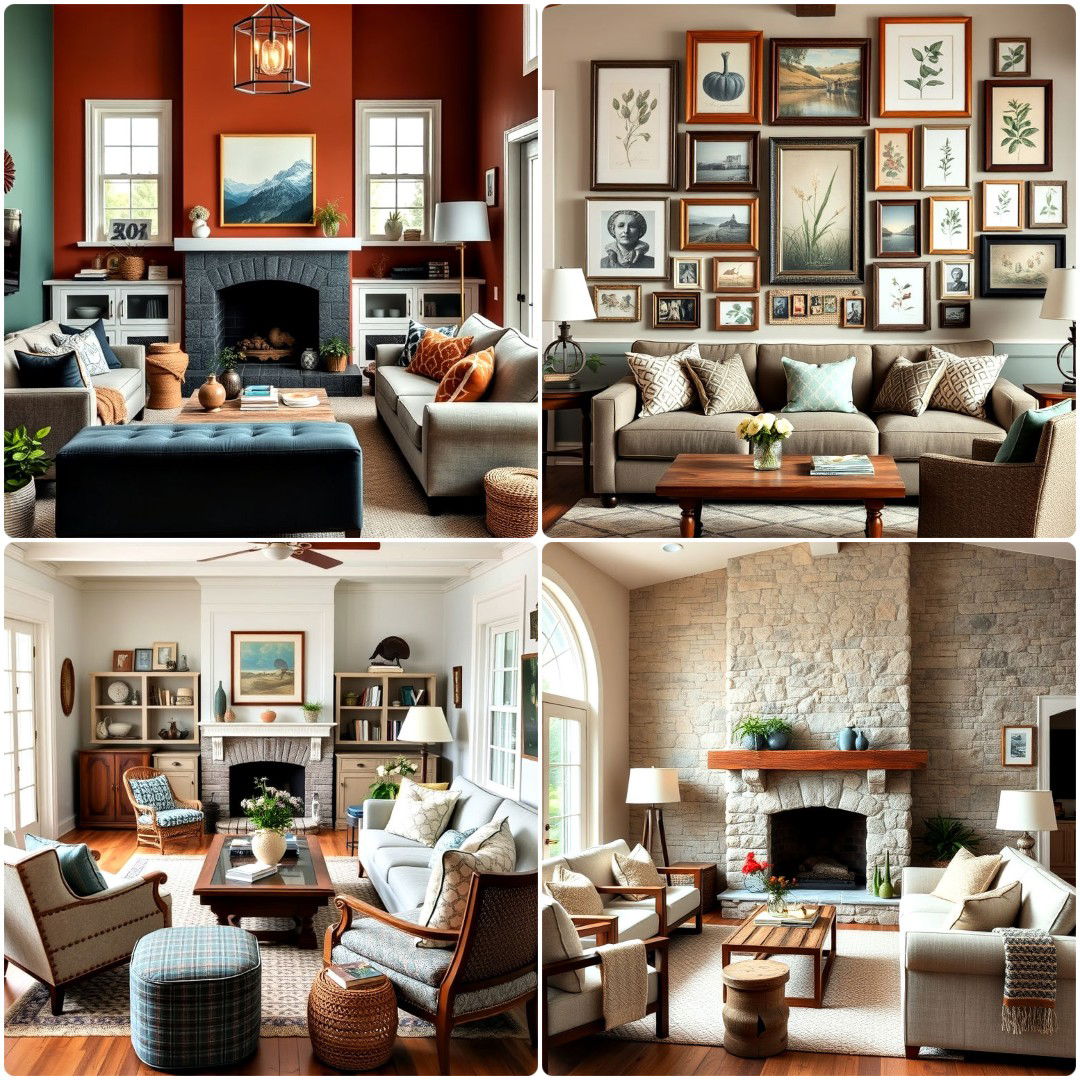
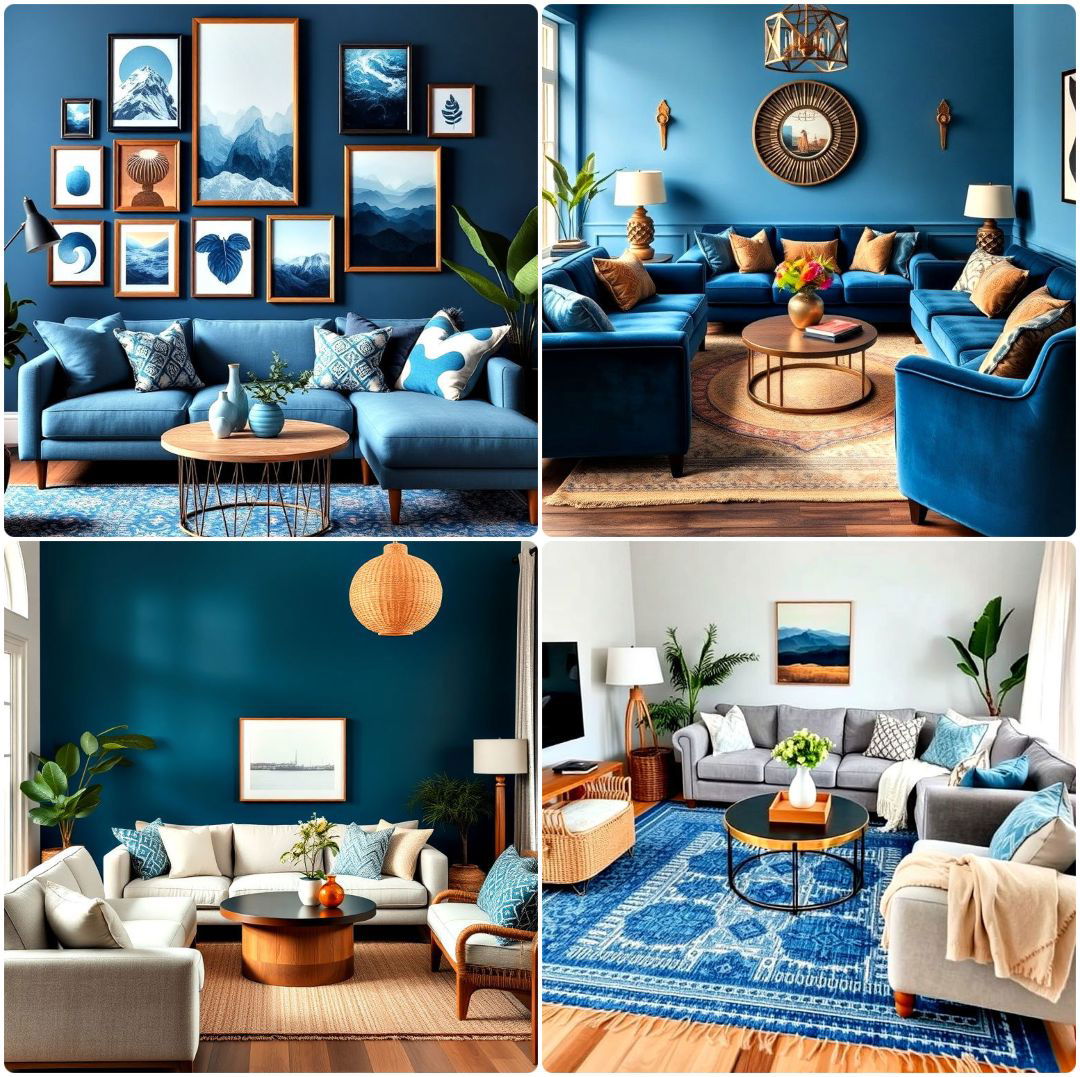

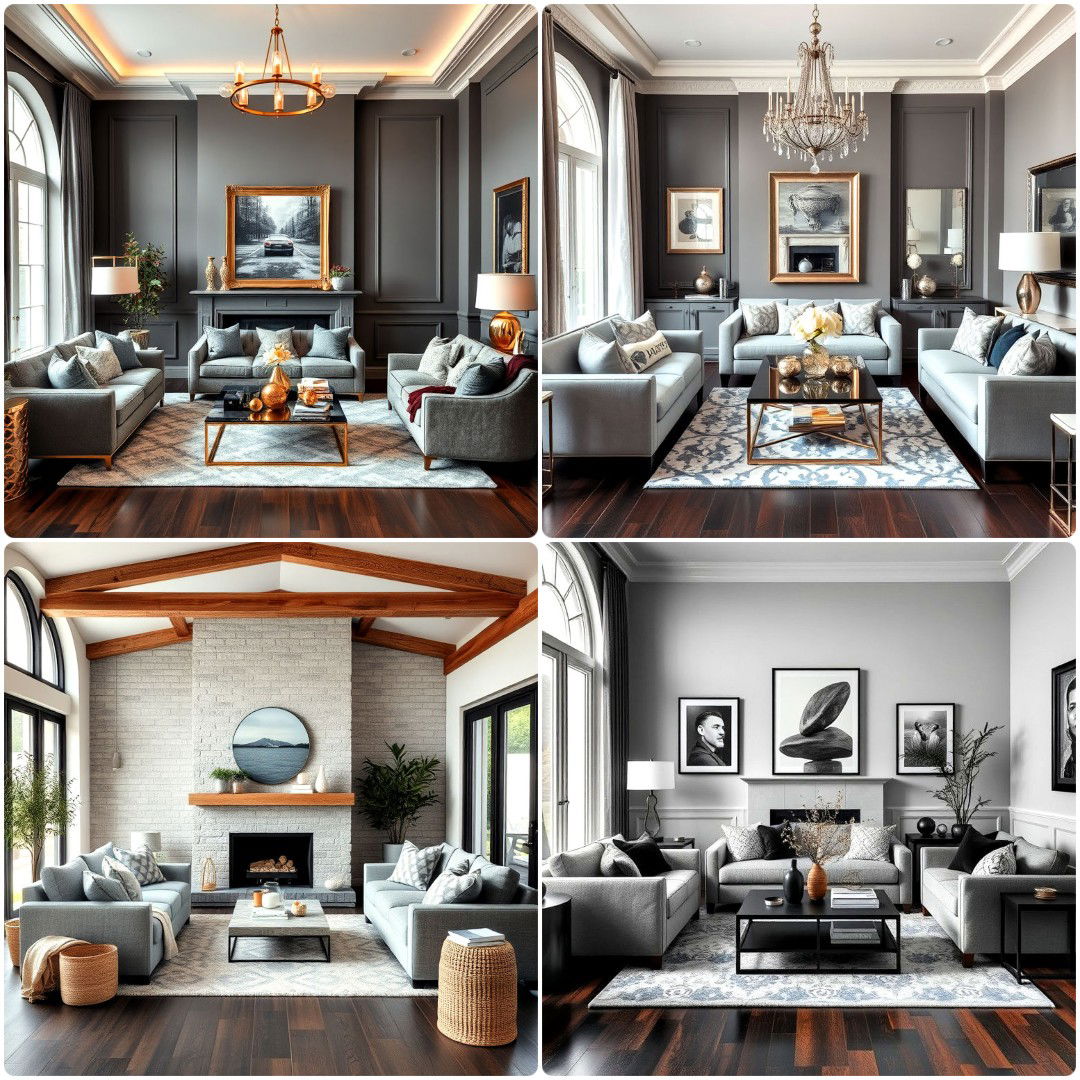
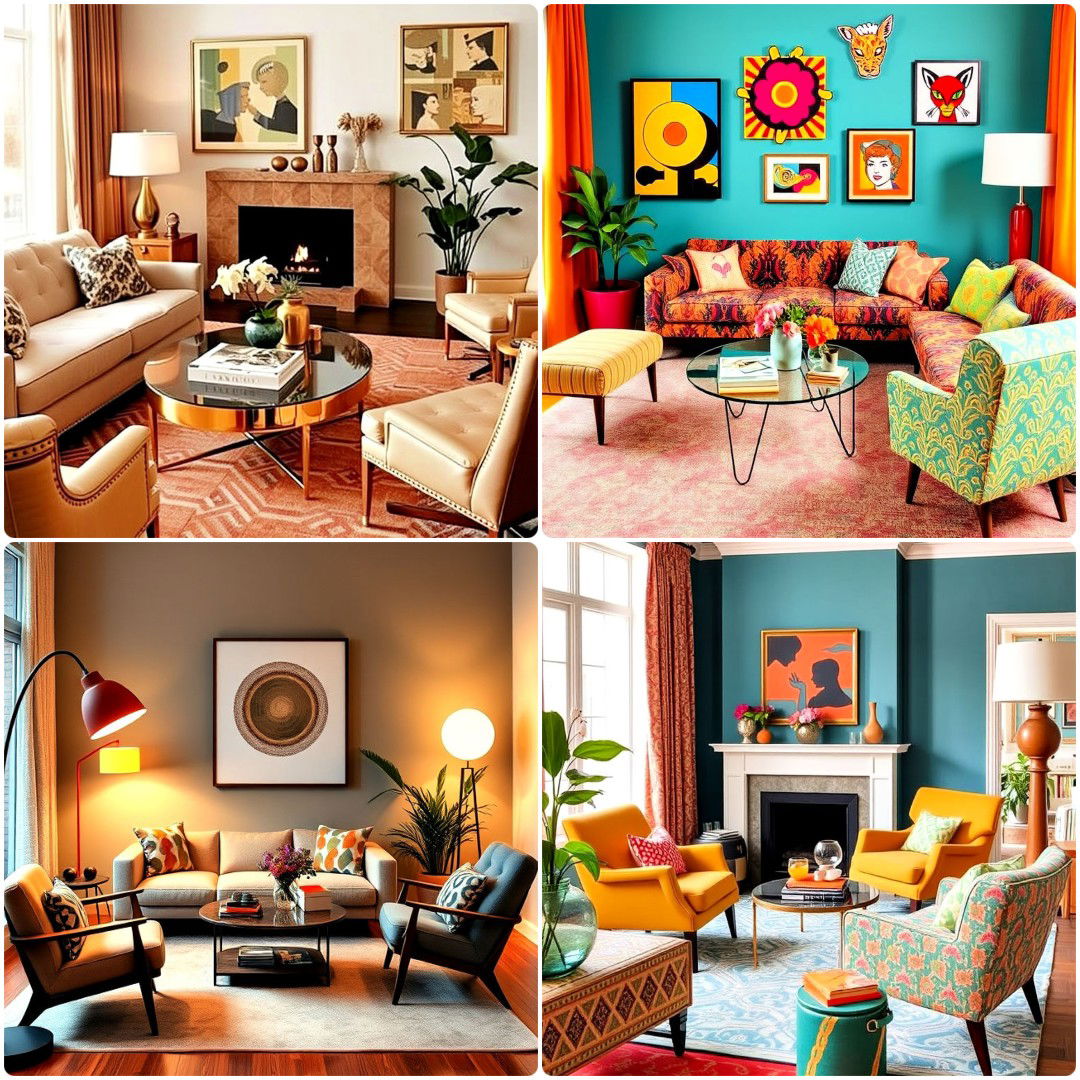
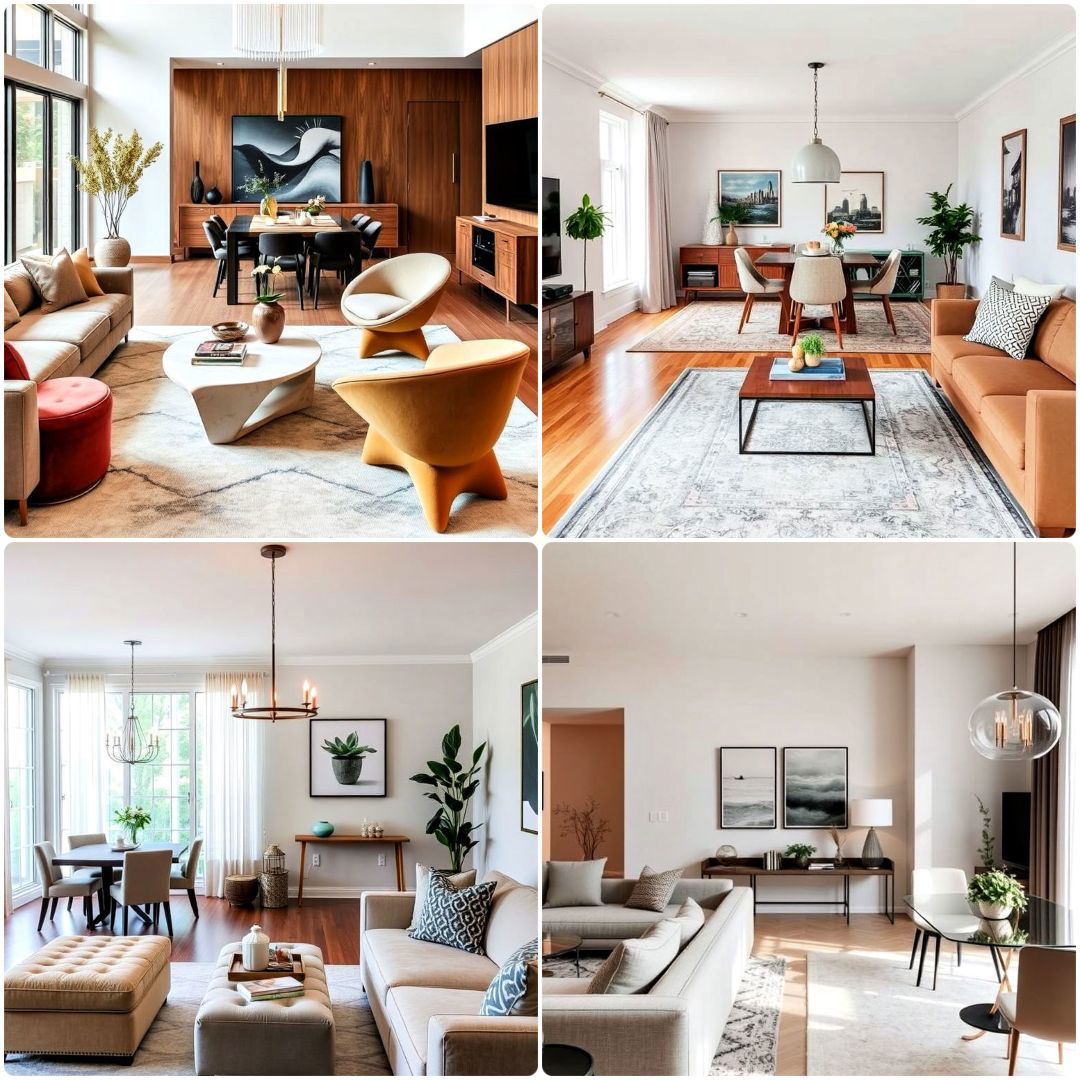
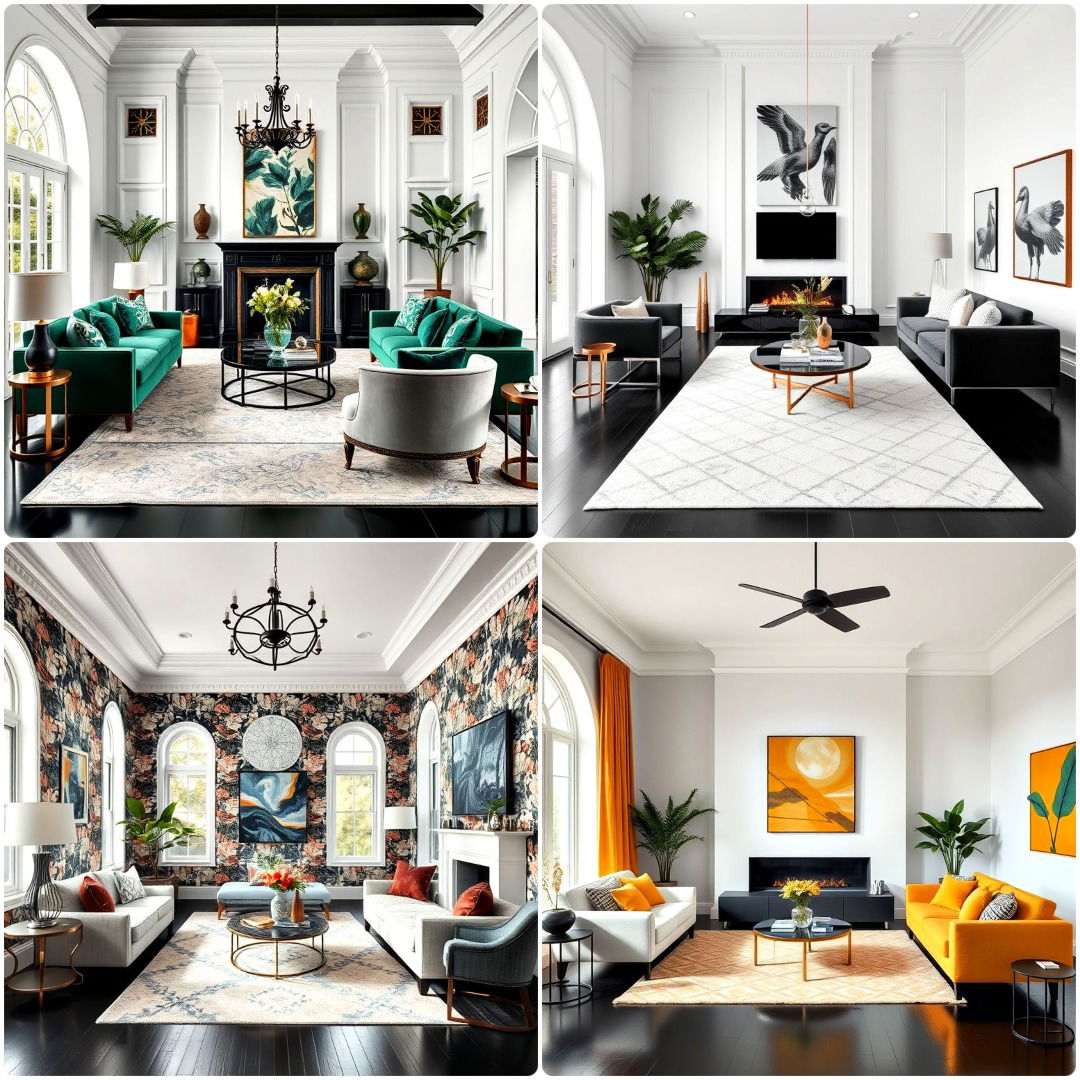
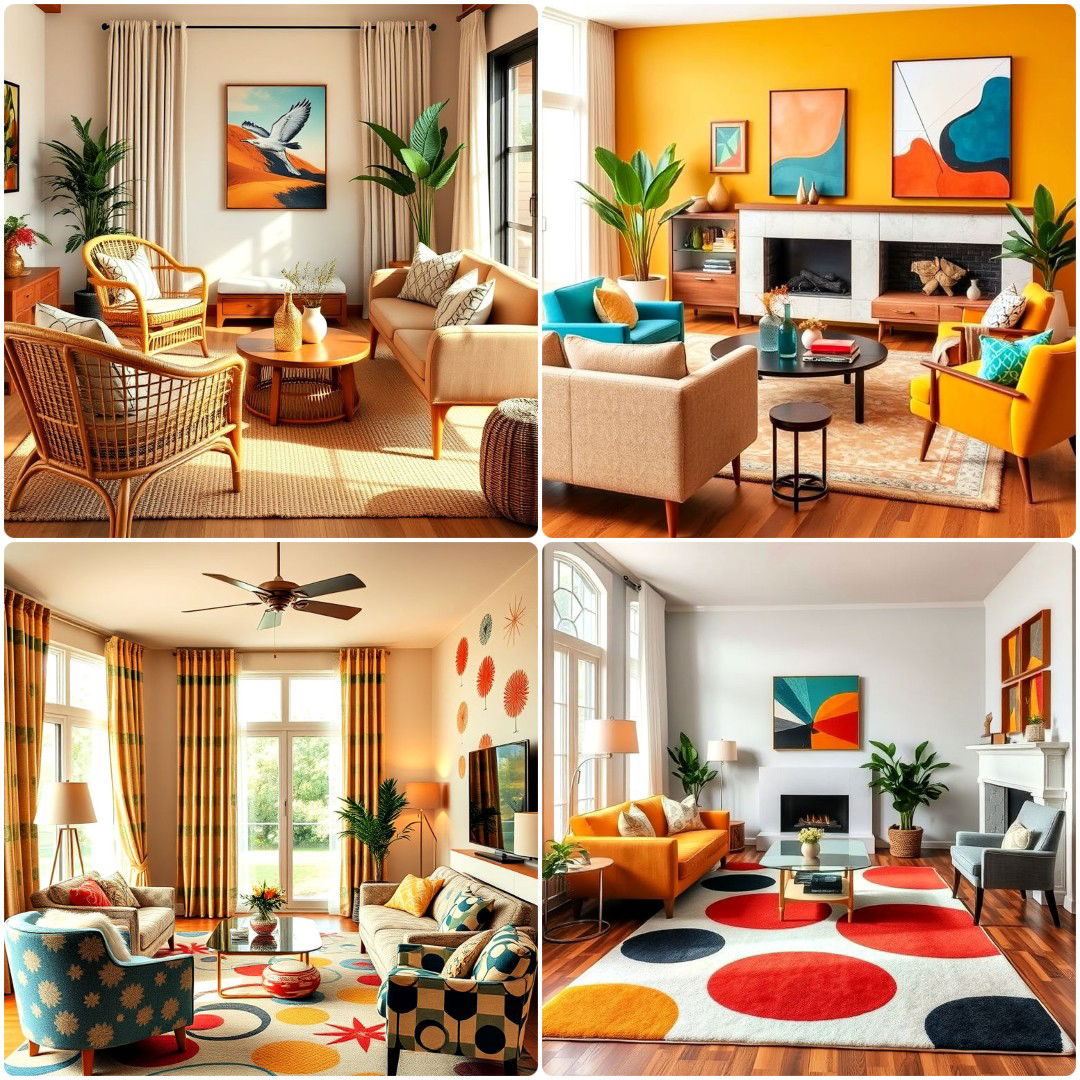
Leave a Reply